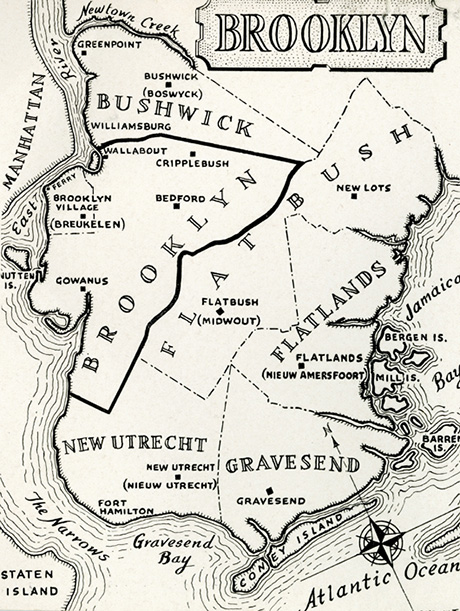
Original Dutch Towns of Brooklyn (Breukelen) from the Brooklyn Eagle, 1946
Source: Brooklyn Historical Society - F129.B7 B766 1946 c.2.
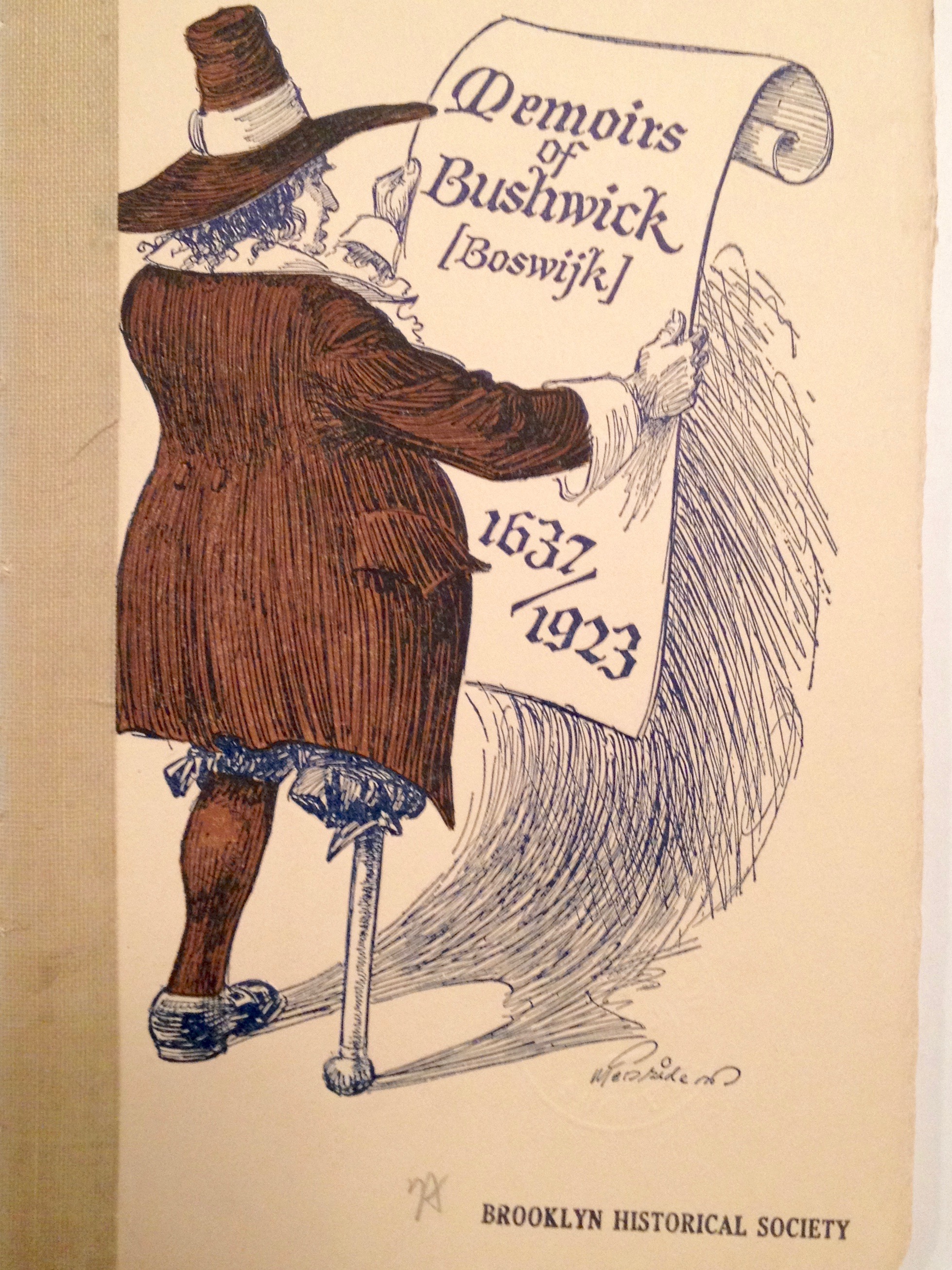
Governor-General Peter Stuyvesant
Source: Brooklyn Historical Society
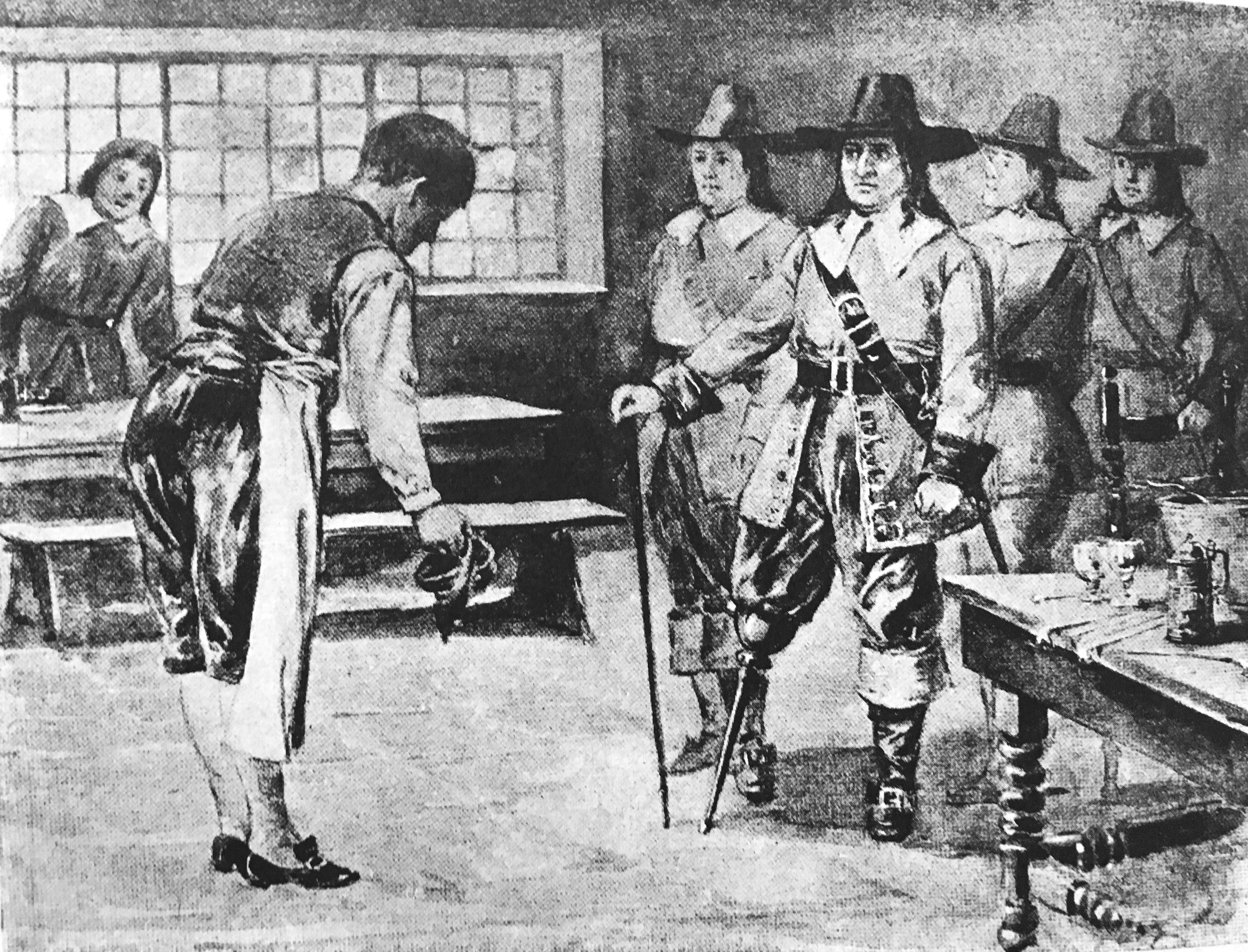
Peter Stuyvesant inspecting taverns
Source: One Hundred Years of Brewing
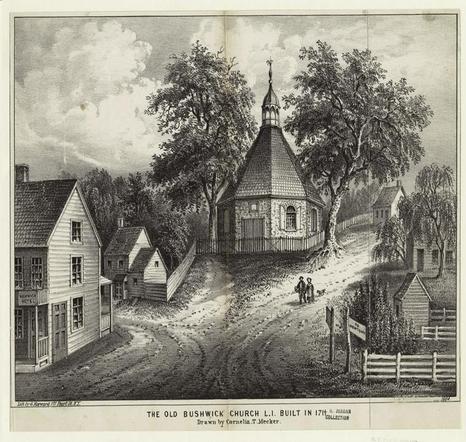
Bushwick Church, 1711
Source: NYPL
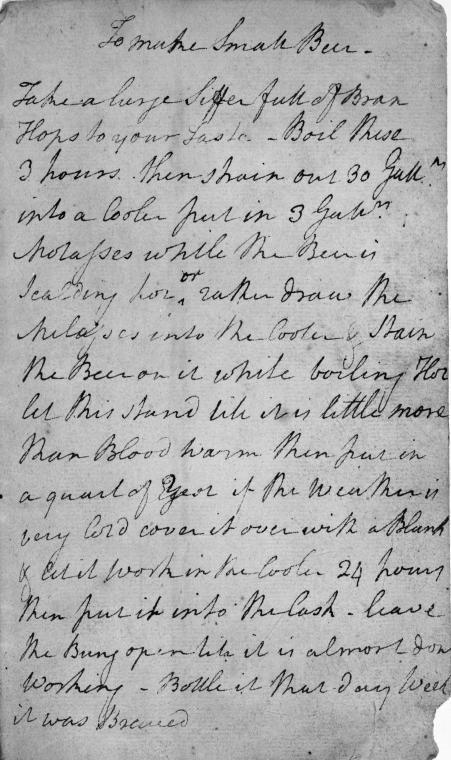
George Washington’s Beer Recipe
In 1918, in the New York Public Library, George Washington’s recipe for making beer in his own handwriting was discovered among the pages of a military notebook he kept while overseeing troops in Virginia during the French and Indian war. While camping with his troops in 1757, he scrawled these instructions for "small beer," a porter made with molasses. The original recipe is still housed in the library’s main building.
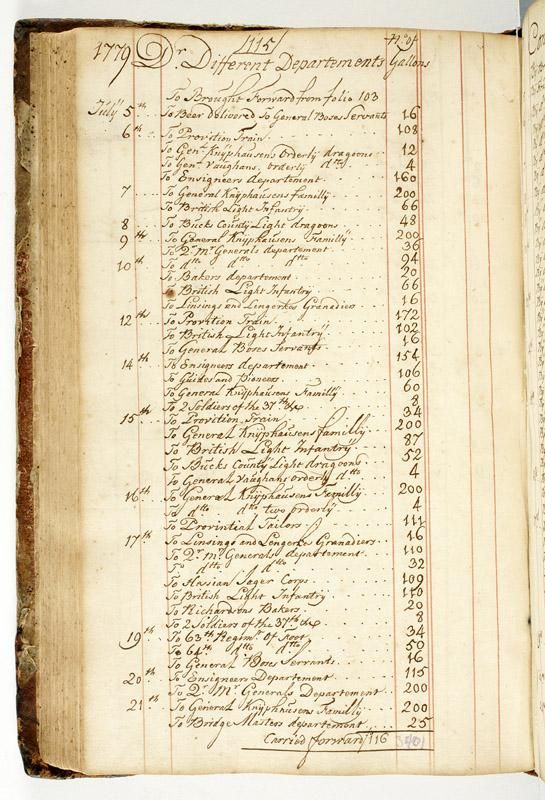
Page from William D. Faulkner Account Books, 1779
During the Revolutionary War, New York City brewer William D. Faulkner (active from 1772 to 1790) sold beer to both the Continental and British armies. Source: New York Historical Society
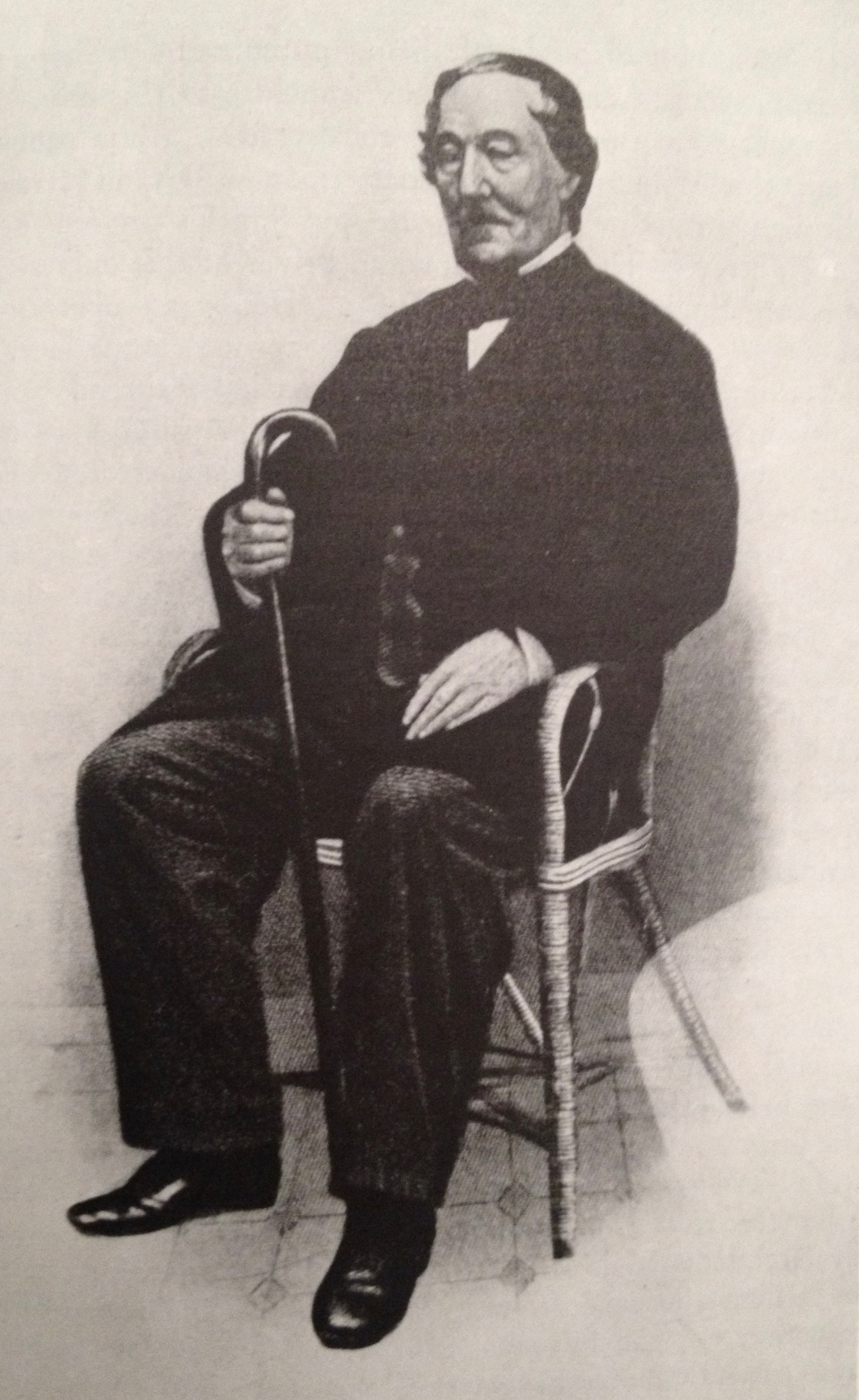
Neziah Bliss
A major developer in the early 1800s in Williamsburg, Greenpoint, and Long Island City (formerly known as Blissville). He plowed the way for Greenpoint Avenue and Franklin Street which once crossed a bridge over Bushwick Creek (also known as Normaan’s Kil).
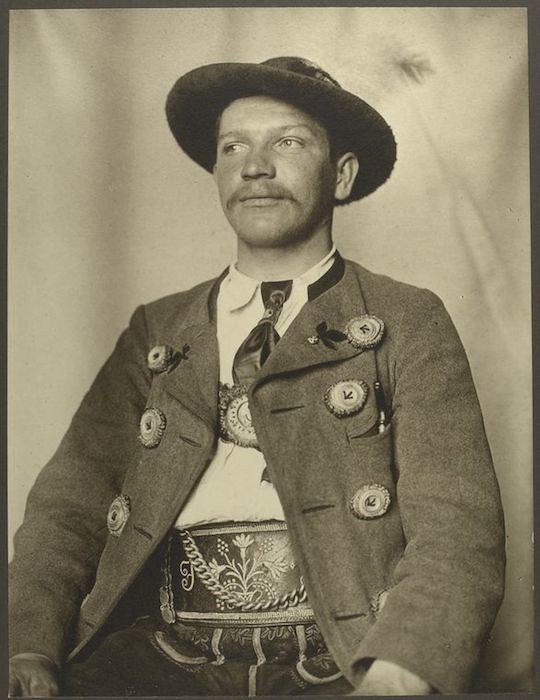
A Bavarian immigrant at Ellis Island
Photo by Augustus Sherman, Chief Registry Clerk on Ellis Island from 1892 until 1925
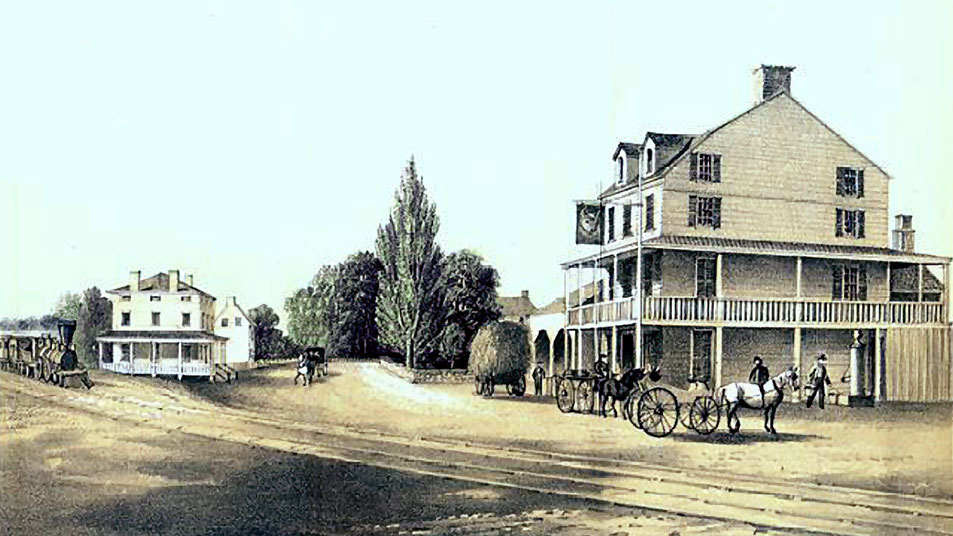
Bakers Tavern, 1842
Flatbush Avenue and Atlantic Avenue, Long Island Railroad on the left.
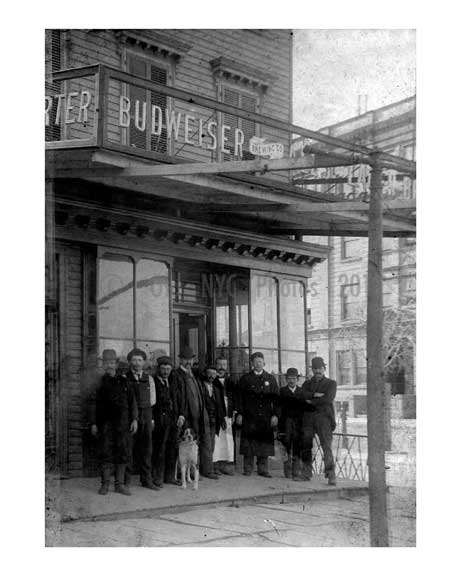
A Bushwick Tavern, 1895
The Budweiser sign is not referring to the Anheuser-Busch brand from St. Louis but to the wholly separate Budweiser Brewery of Prospect Heights, Brooklyn. That brewery would be sued by Anheuser-Busch in 1898 and change its name to Nassau Brewing Company.
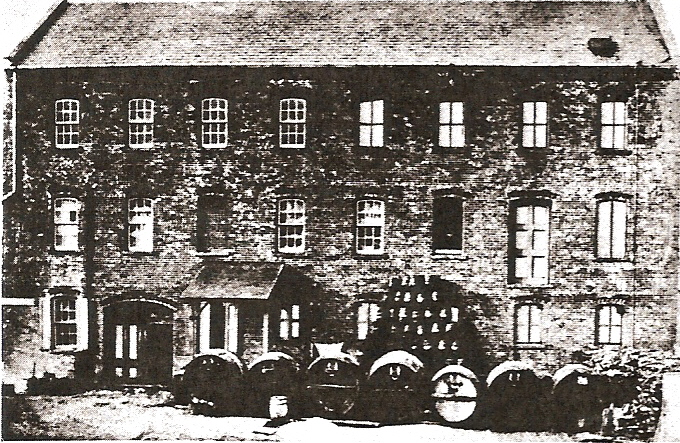
Lanzer Brewery
The Piel brothers start out by buying this brewery located on the corner of Liberty and Georgia. This photo is of the original Lanzer Brewery, before it was damaged extensively by fire in 1873. The Piel brothers would rebuild the brewery and open on May 24, 1883 (the same day the Brooklyn Bridge was opened). Photo source: TJ Wiegand Collection
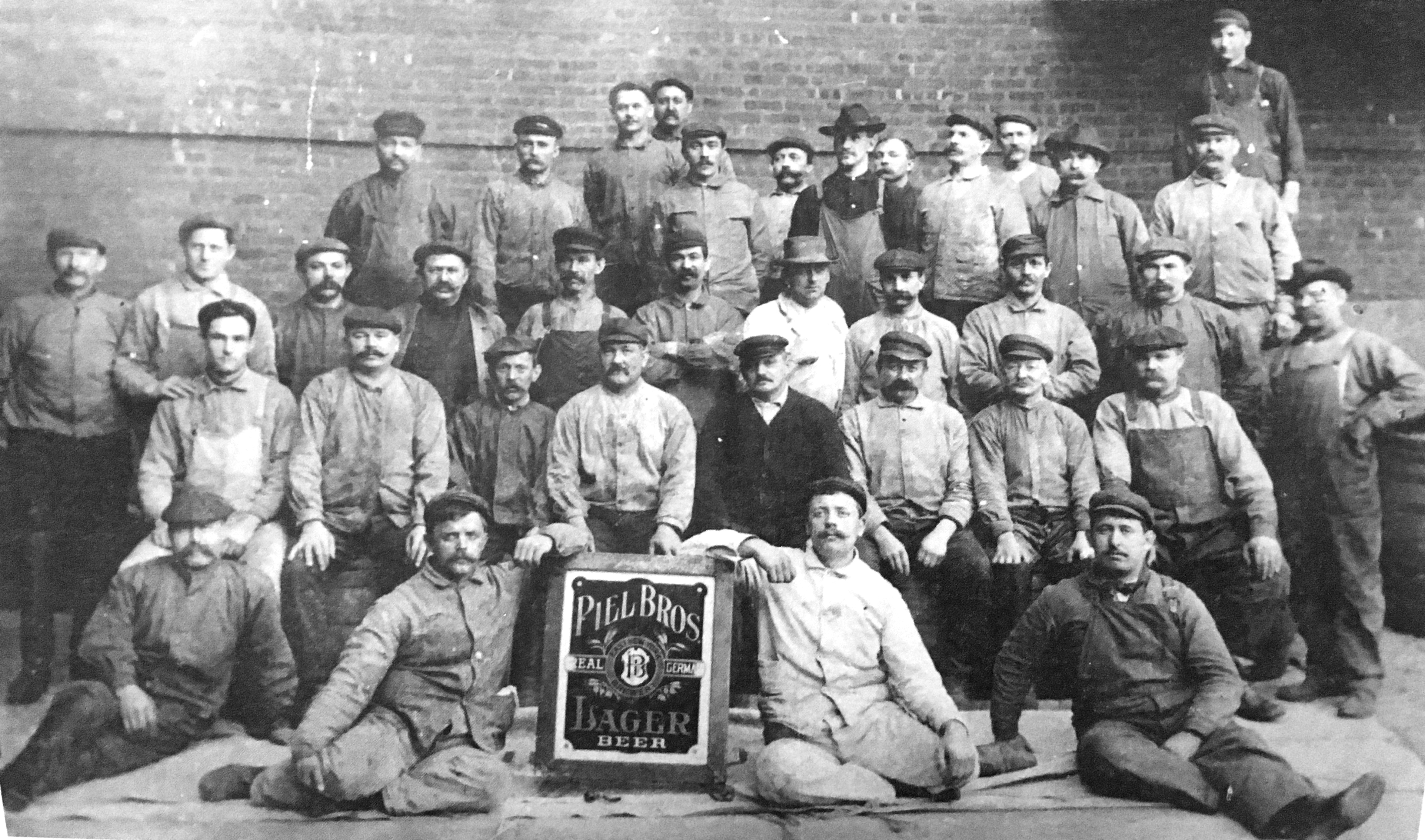
Workers at Piel Brothers Brewery, 1900
Source: brooklynpix.com via Beer of Broadway Fame
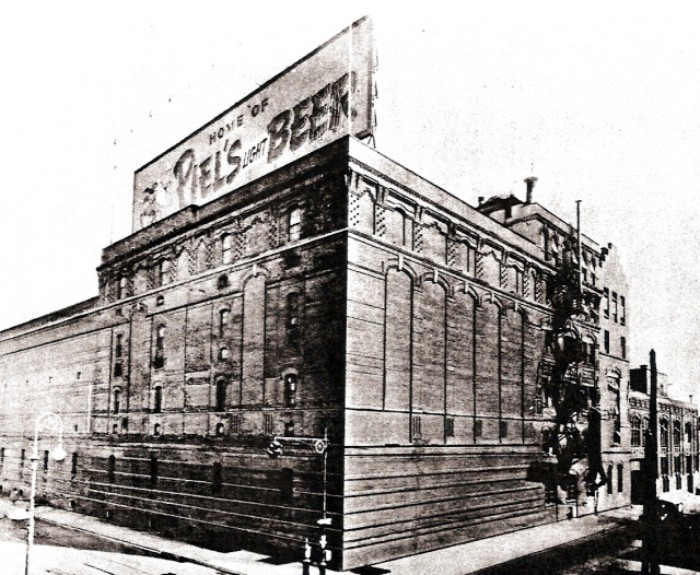
Piel Brothers, 1942
Source: East New York Project
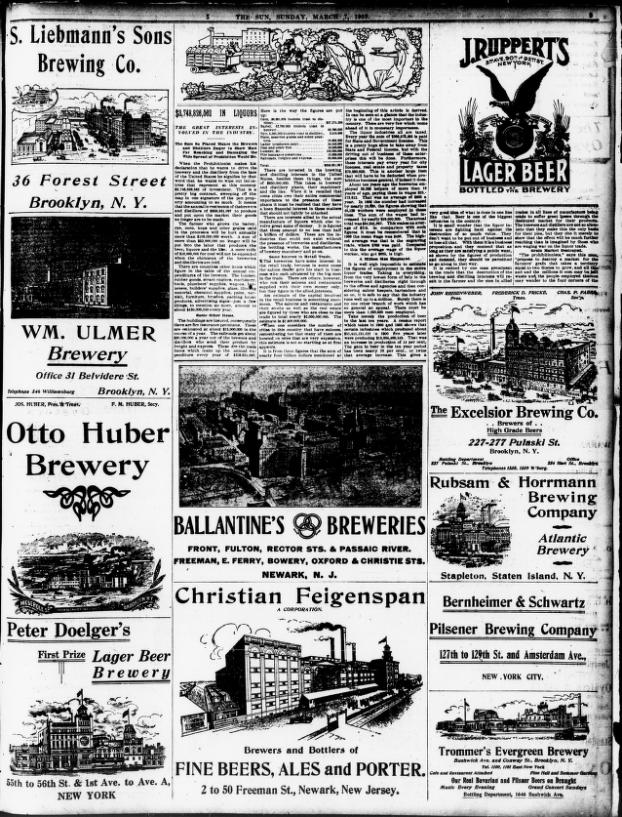
1909 New York Sun Brewery Ads
Liebmann’s (Bushwick), Otto Huber (Bushwick), Ulmer (Bushwick), Trommer’s (Bushwick), Excelsior (Bushwick)
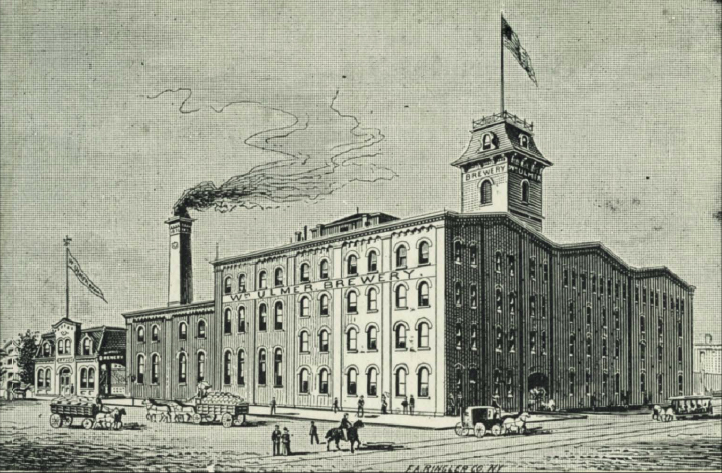
William Ulmer Brewery
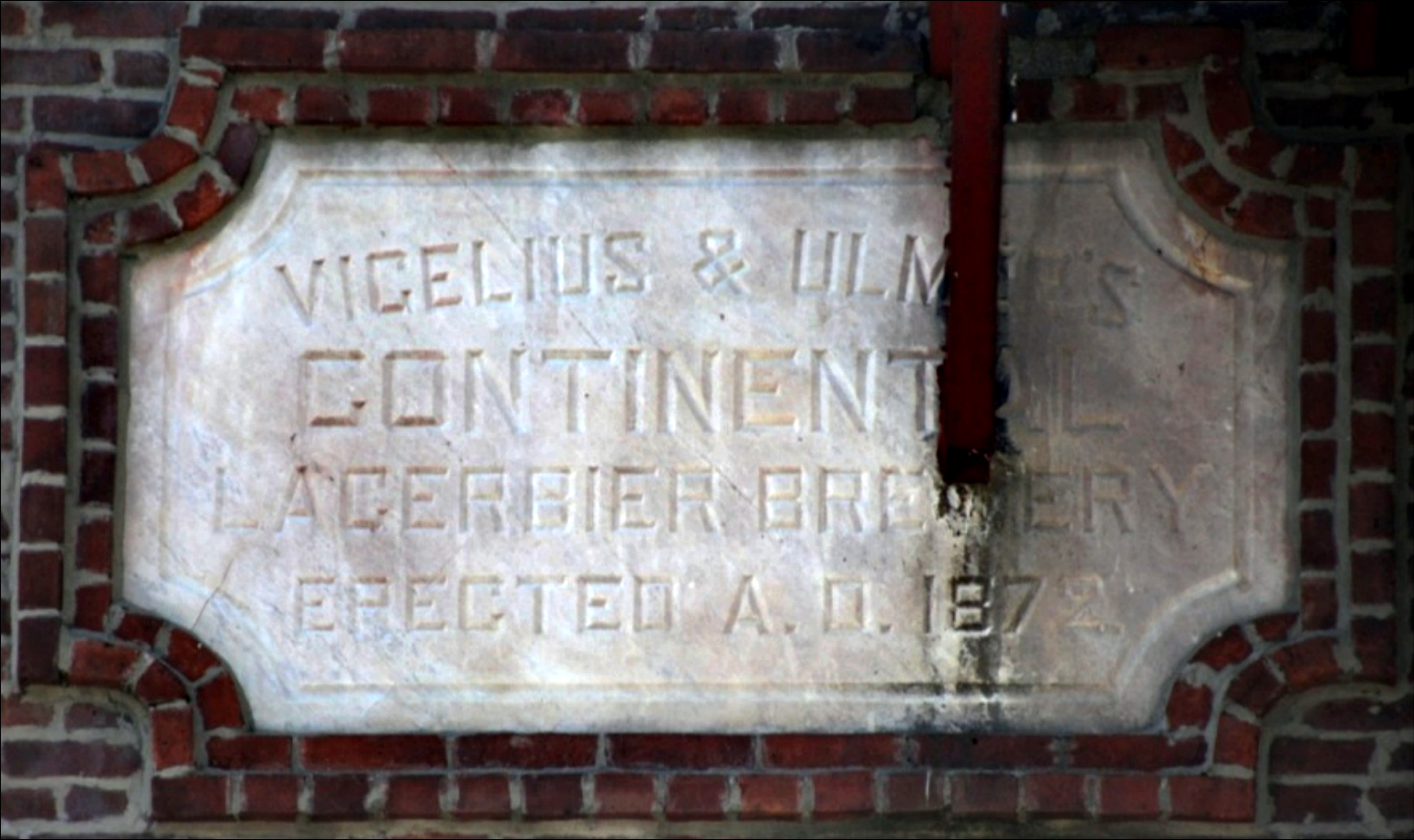
William Ulmer Plaque
Marking it as the first brewery in New York City to be landmarked, 2010.
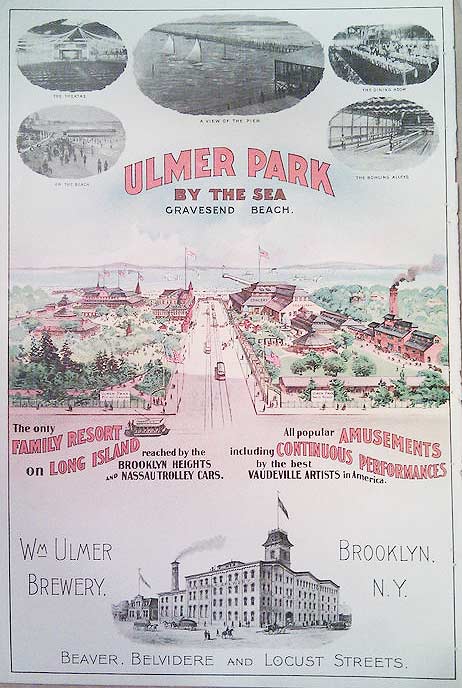
Ulmer Park Advertisement
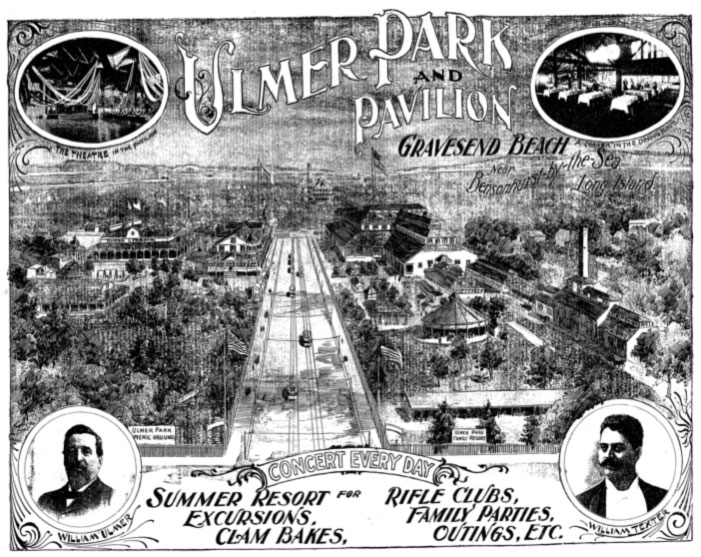
Ulmer Park Advertisement in The Brooklyn Eagle
June 14, 1896
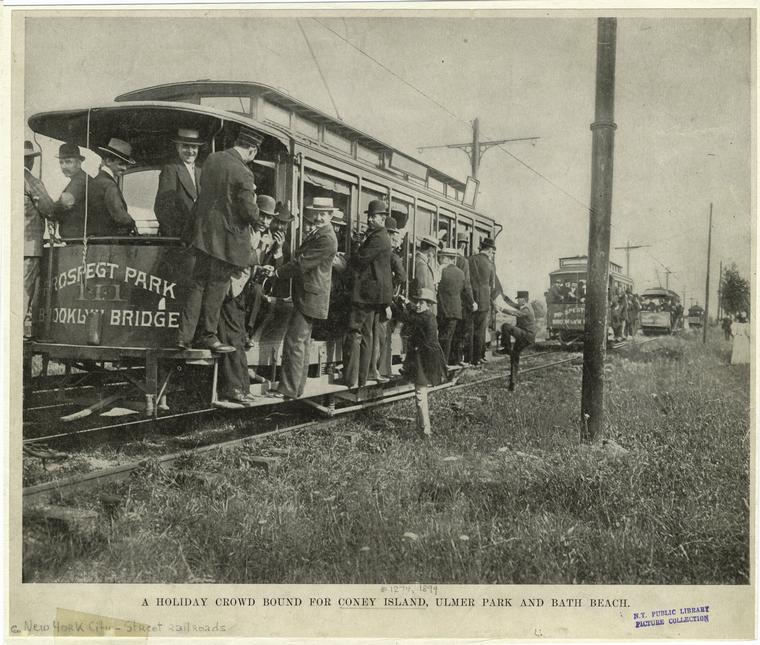
Trolley bound for Ulmer Park, 1899
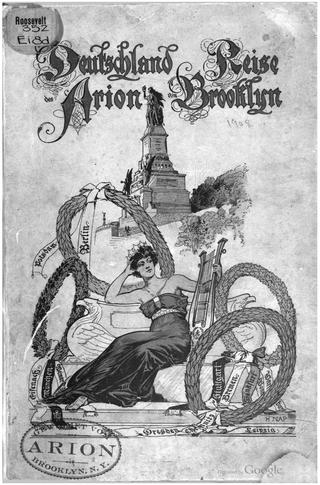
Cover of Egon Eisenhauer, Auf Flügeln des Gesanges die Deutschlandreise des Arion von Brooklyn
(Translation: On the Wings of Song, the German Story of Arion of Brooklyn) Source: F. Wiedner Printing & Publishing Company, 1908
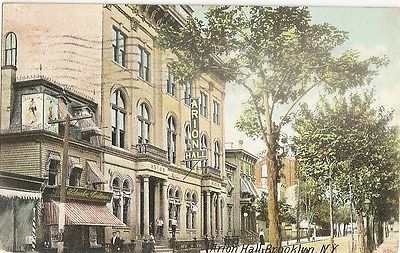
Arion Hall
1908 Brooklyn Postcard

A cornerstone inscription noting the former name of Arion Place, Wall Street
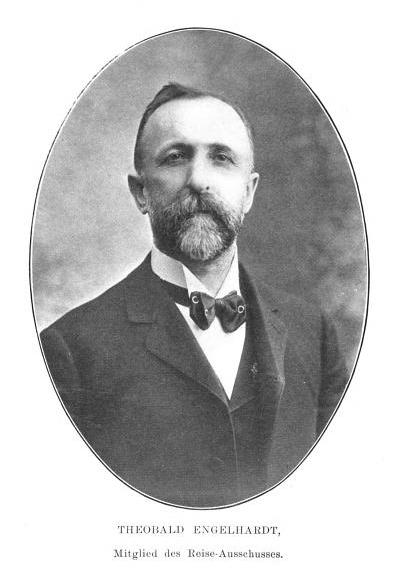
Theobald Mark Engelhardt (1851–1935)
One of Brooklyn’s most prolific architects and designer of many iconic buildings such as The William Ulmer Brewery complex, Arion Hall, Northside Savings Bank, and Eberhard Faber Pencil Factory.
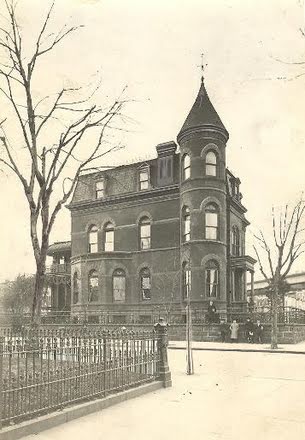
Lipsius Cook Mansion (670 Bushwick Avenue at Willoughby Avenue)
Designed by Theobald Engelhardt and built in 1889 as the home of Henry Claus and his wife, Catherina Lipsius. They sold the home in 1902 to Dr. Frederick Cook (not to be confused with the 18th century British explorer James Cook), a physician and arctic explorer who claimed to be the first man to reach the summit of Alaska’s Denali (formerly Mount McKinley) in 1906. He later claimed he was the first man to reach the North Pole in 1908, contradicting Robert Peary’s claim that he was the first, and triggering a widely publicized dispute. Both of Cook’s claims were eventually discredited. He later served 7 years in prison for stock fraud. The house was sold to an Italian family in 1920, then became a convent, then a doctor’s clinic, then abandoned, and now has new owners.
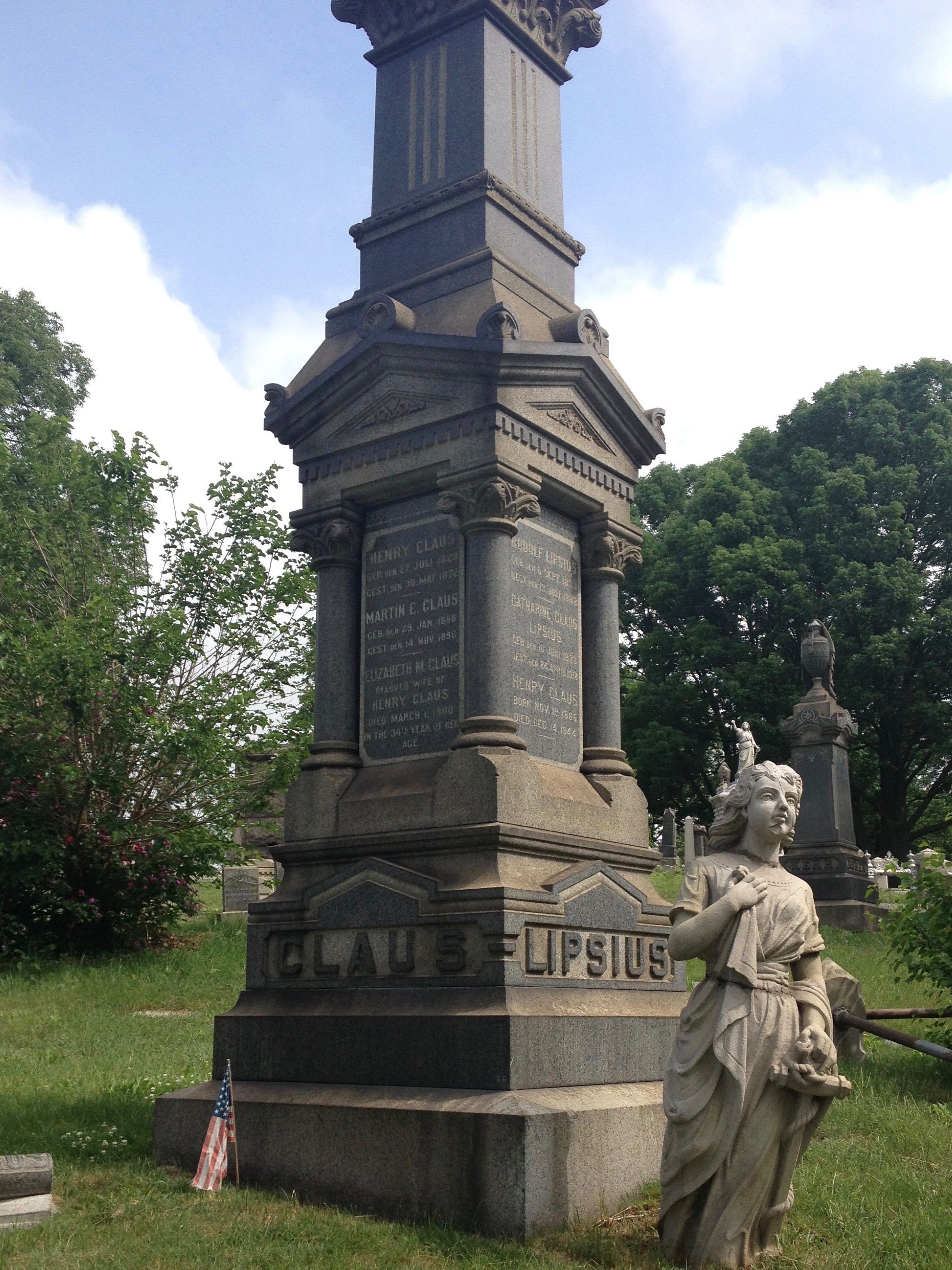
Lipsius Claus Monument
In Evergreens Cemetery, steps from the original Trommer’s Evergreen Brewery and Restaurant is this monument dedicated to Henry Claus and his wife, Catherina Lipsius, as in the Claus-Lipsius Brewing Co. (1889–1904) located at 471 Bushwick Ave & Forrest St / 493 Bushwick Ave.
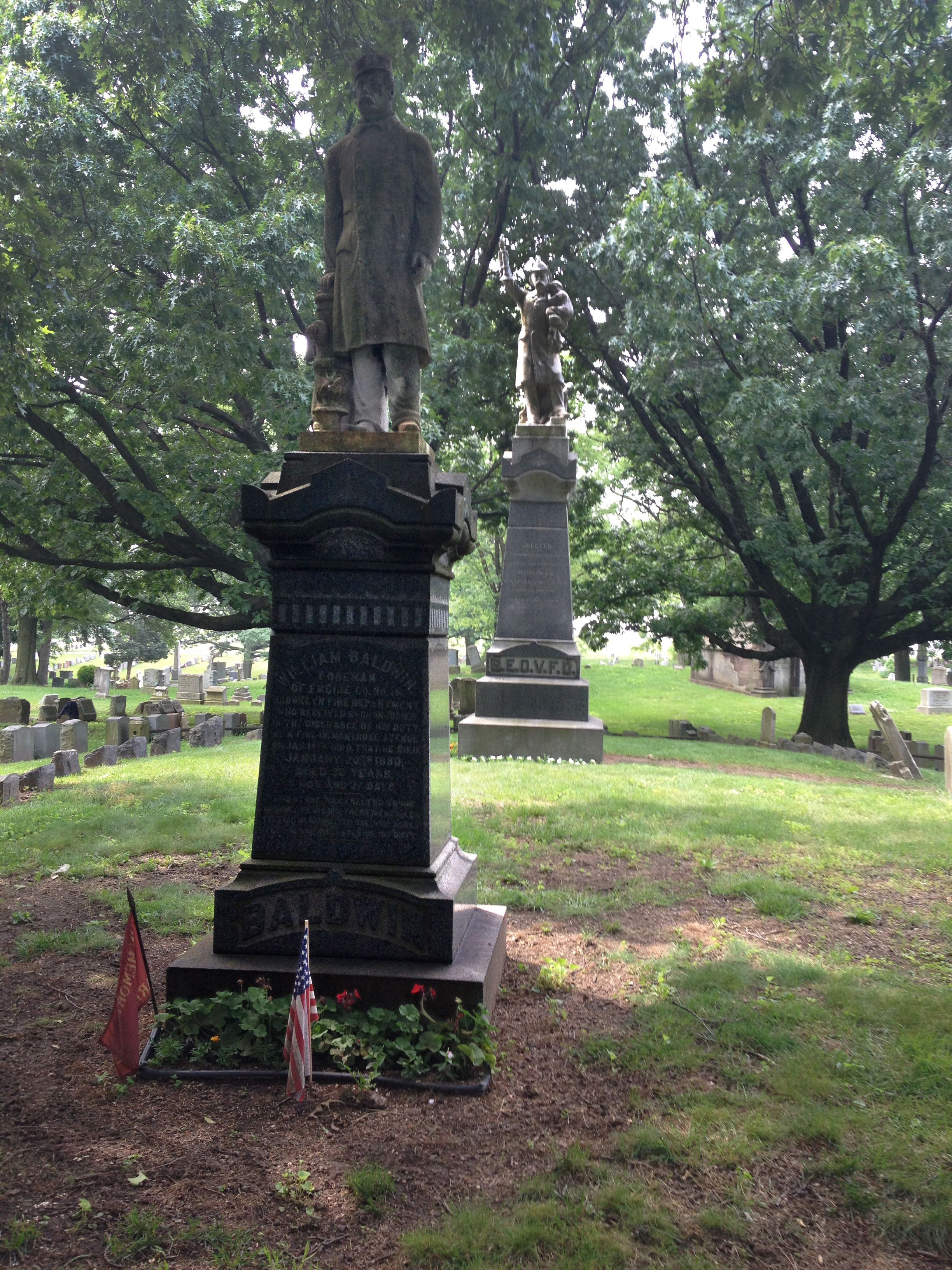
William Baldwin Monument
Also in Evergreens Cemetery, is this monument of Capt. William Baldwin, the first firefighter in Brooklyn to die in the line of duty. He was helping put out a fire at the Otto Huber Brewery on Jan 14, 1880.
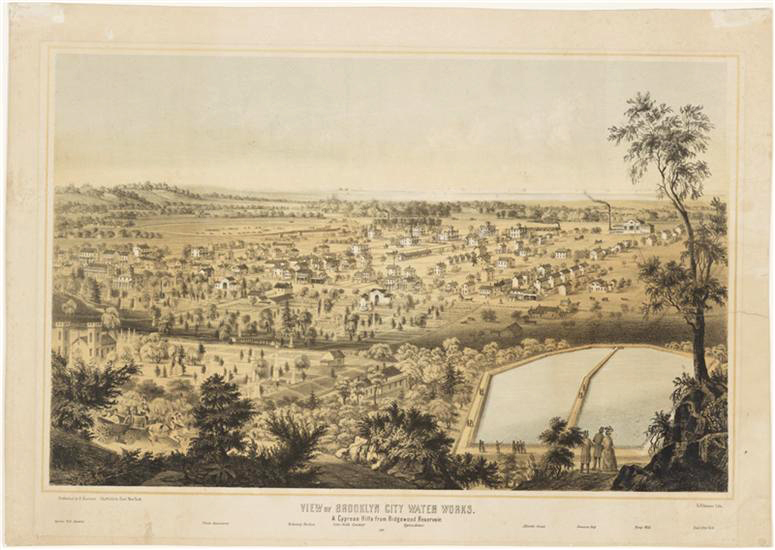
Ridgewood Reservoir lithograph, 1859
View of Brooklyn City Water Works and Cypress Hills from Ridgewood Reservoir by Frederick Blummer and Gustav Kraetzer, an East New York publisher/lithographer
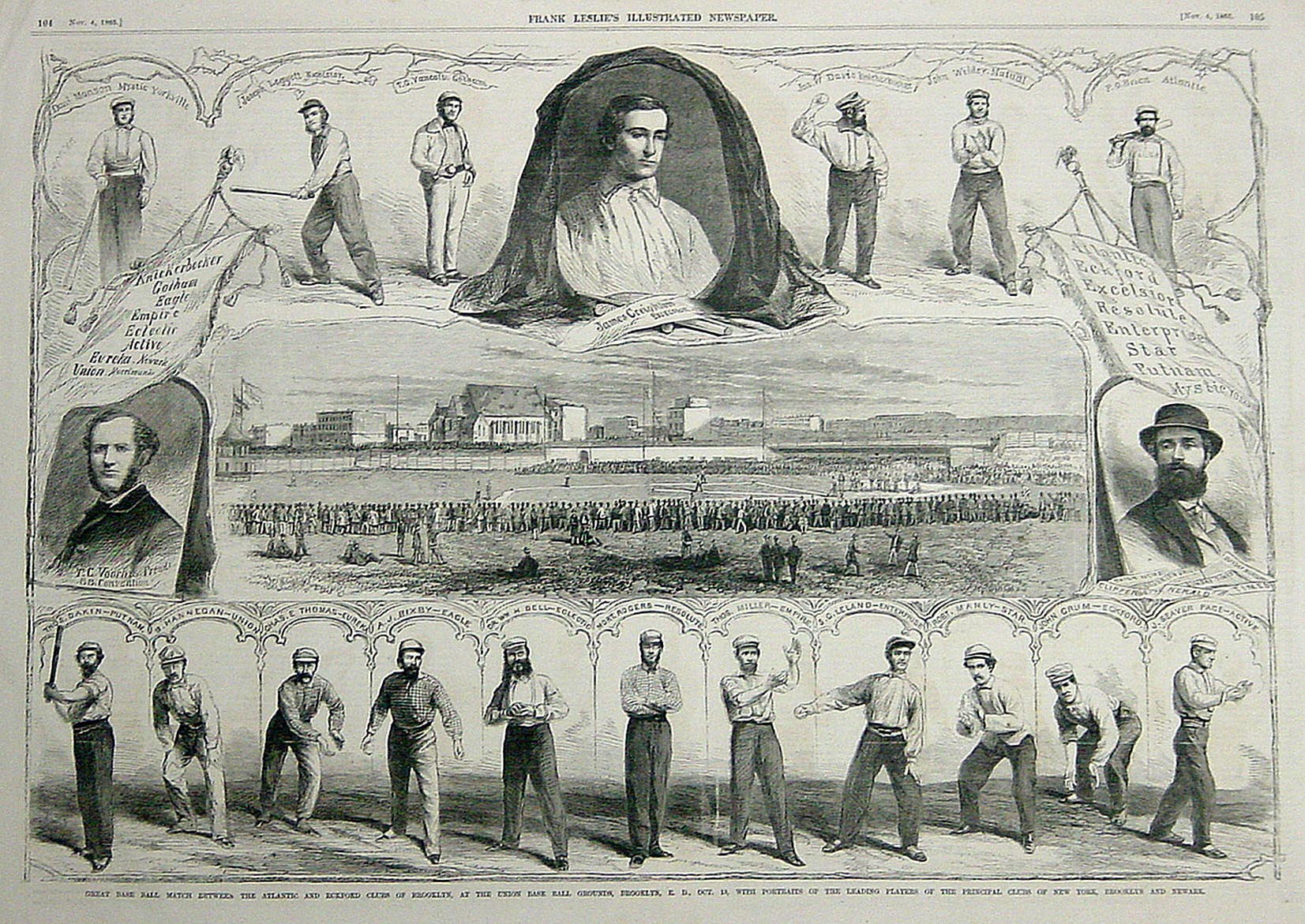
Baseball in Bushwick
A spread from Frank Leslie’s Illustrated Newspaper, November 4, 1865. Deceased star player Jim Creighton is shrouded at the top. On the right, newspaper mastheads and a portrait of Henry Chadwick pay homage to sportswriters. On the field, the Atlantics beat the Eckfords in the world’s championship, 38 to 8.
The illustration’s caption reads: "Great base ball match between the Atlantic and Eckford Clubs of Brooklyn, at the Union Base Ball Grounds, Brooklyn, E. D. Oct 13, with portraits of the leading players of the principle clubs of New York, Brooklyn and Newark." (E. D. stands for Eastern District)
The Union Grounds were built in 1862 on the outskirts of the nearby town of Wallabout, at today’s Marcy Ave & Lynch St. It was the first to fence in the playing field and charge spectators.
Chadwick lived in Brooklyn and came to be known as the "Father of Baseball." He is credited with creating the statistics of batting average and earned run average (ERA) as well as box scores and the abbreviation "K" that designates a strikeout.
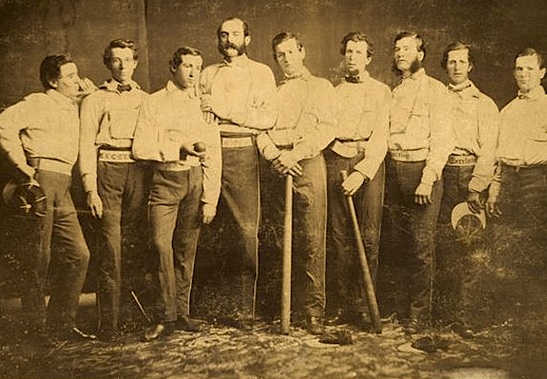
The Brooklyn Excelsiors of 1860
Here’s Creighton again (he was a pitcher, third from the left in this photo, holding the ball). He was baseball’s first superstar known for his “wrist throw” and a “speedball.” He’s also interred at Brooklyn's Green-Wood Cemetery as are Henry Polhemus (second baseman, tallest in the photo) and Asa Brainard (left fielder, second from right).
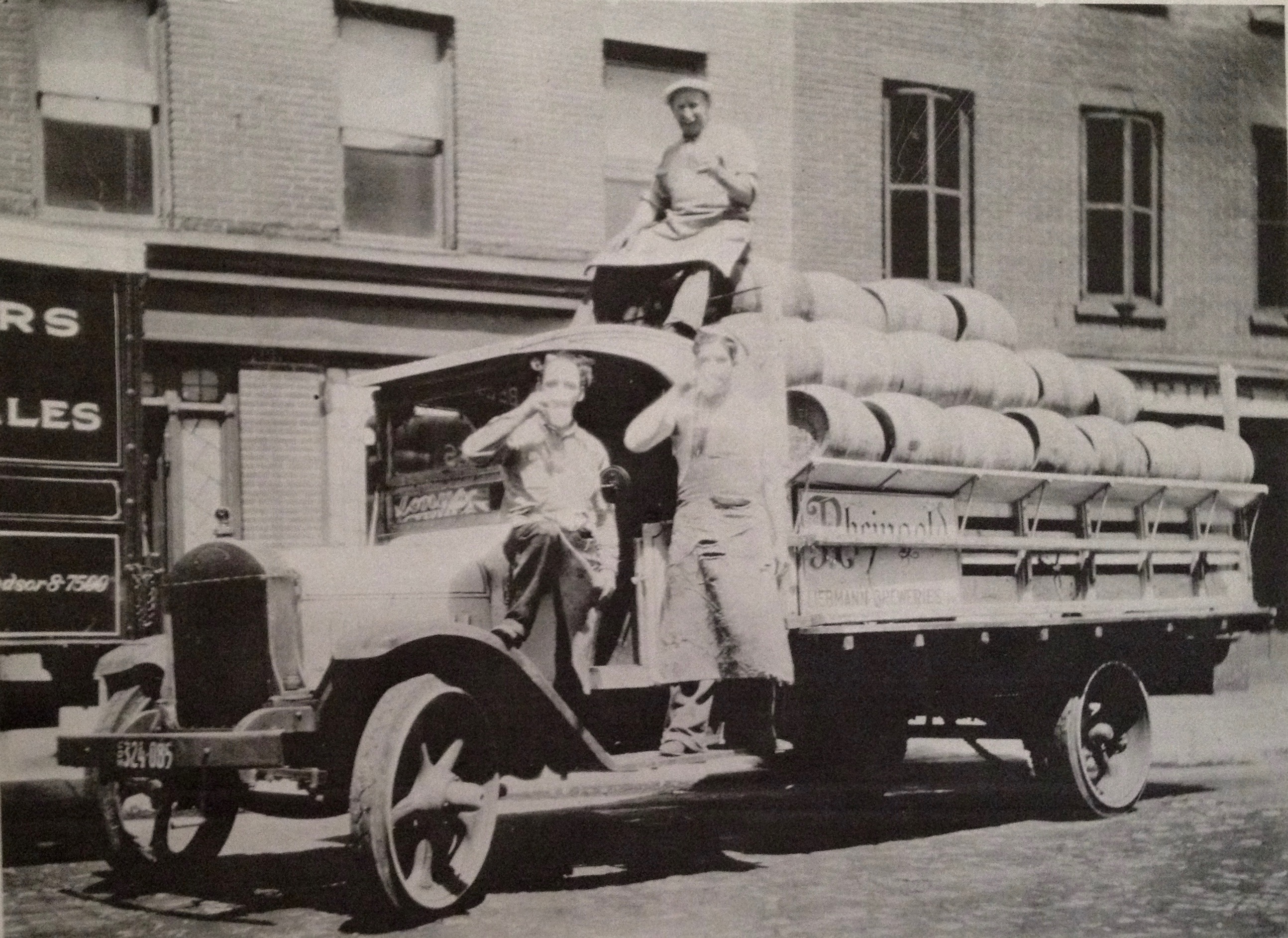
A Rheingold Delivery Truck
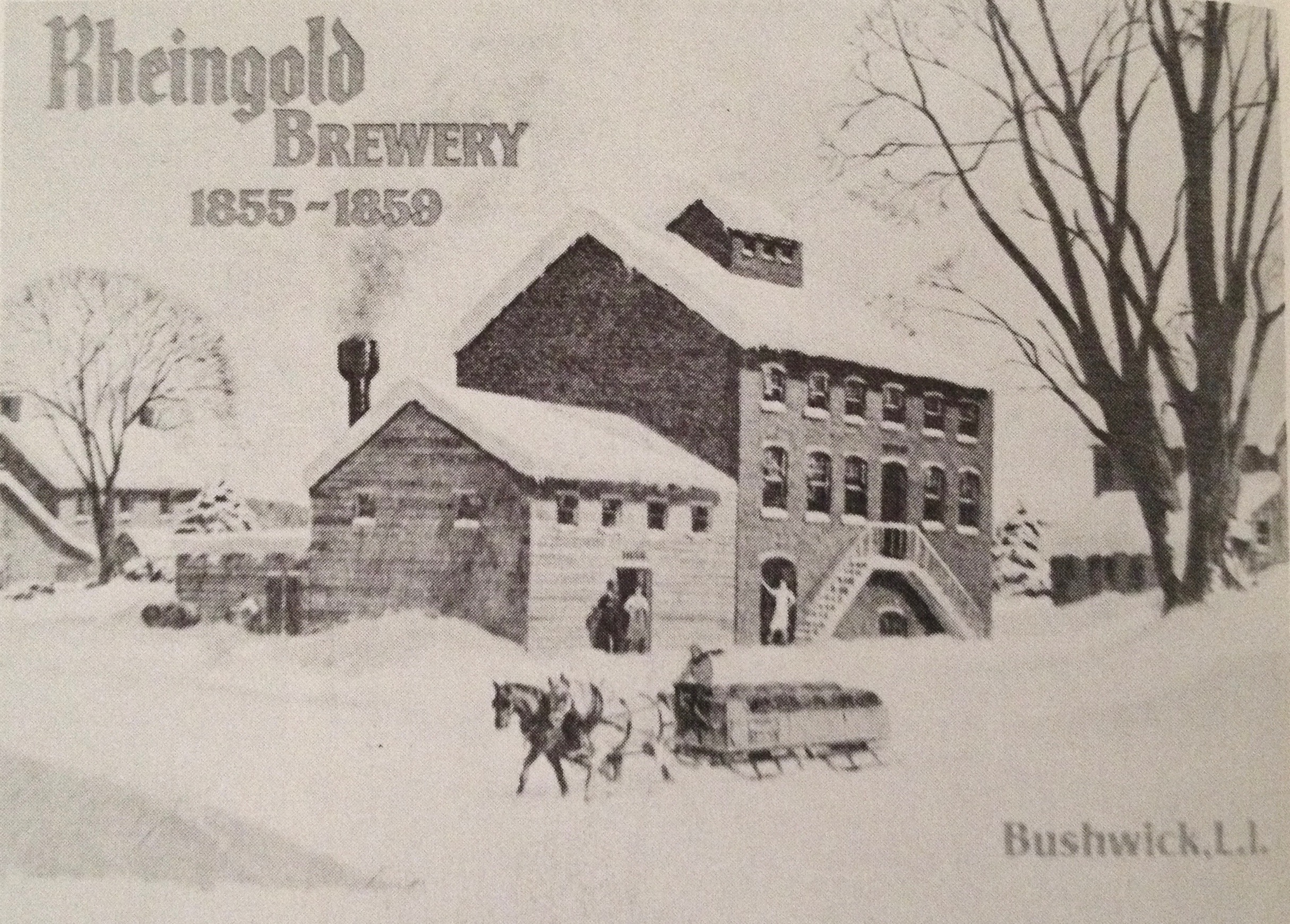
Rheingold Postcard, 1972
Depicting the original brewery in Bushwick in 1855
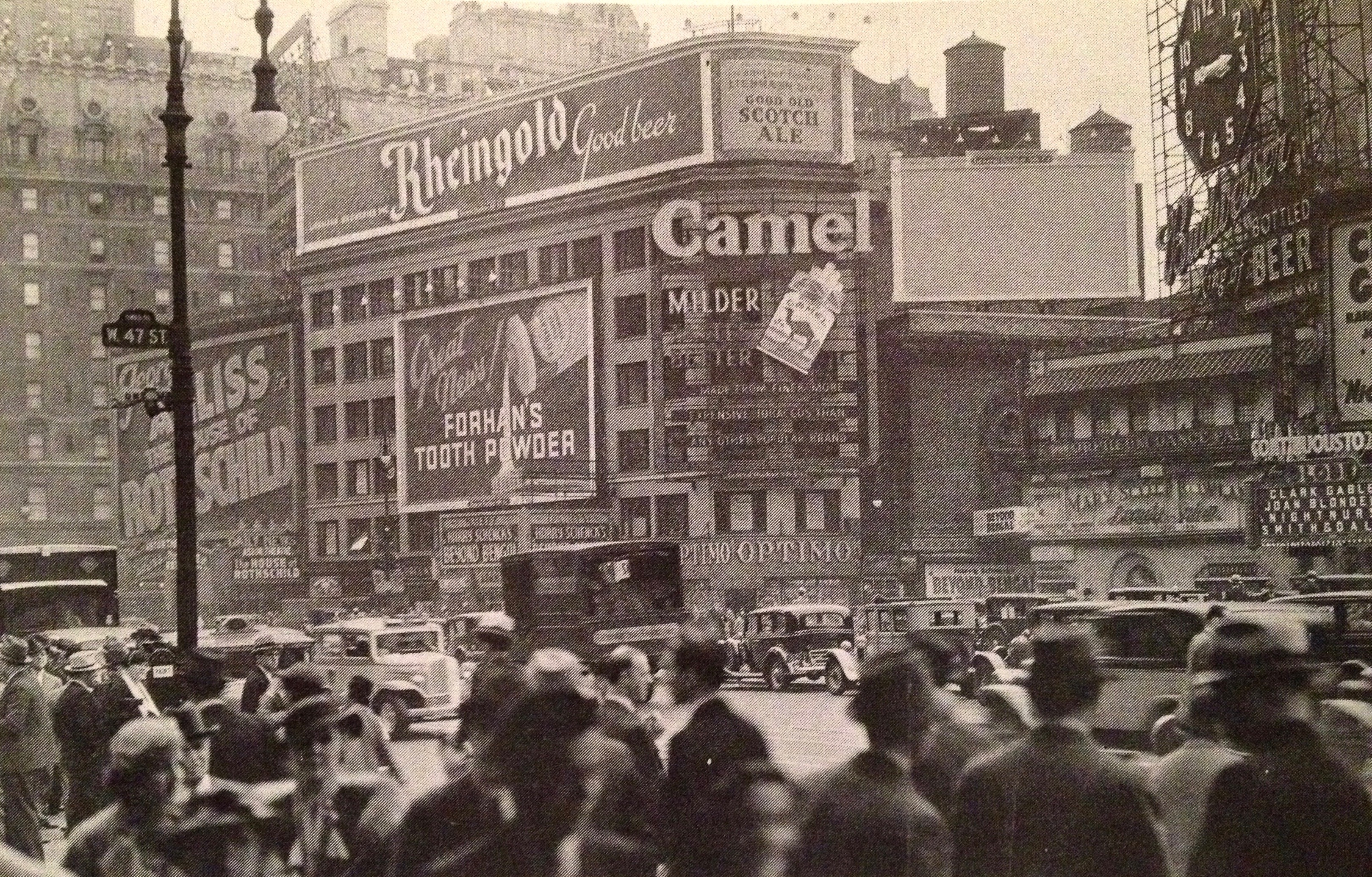
Times Square, 1934
Note the Rheingold billboard
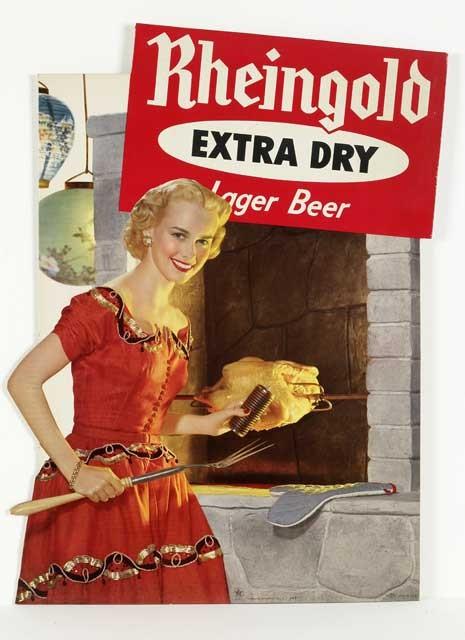
Miss Rheingold Ad
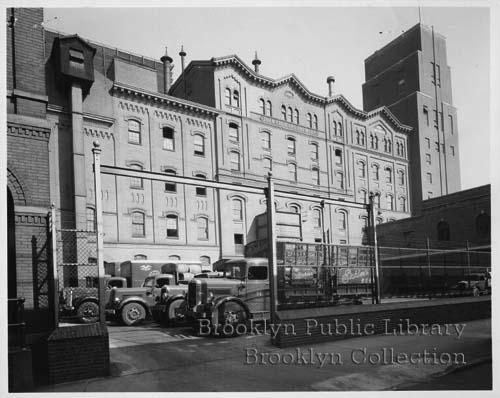
Liebmann & Sons (Rheingold Brewery)
36 Forrest Street
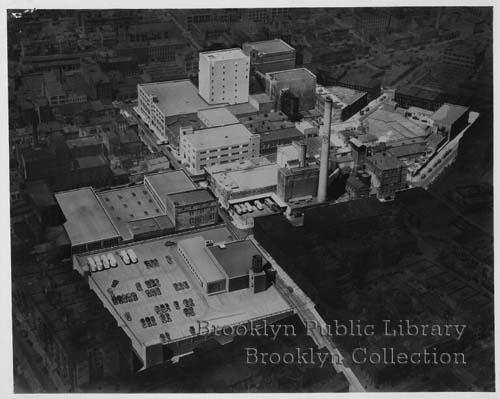
Liebmann & Sons (Rheingold Brewery)
36 Forrest Street
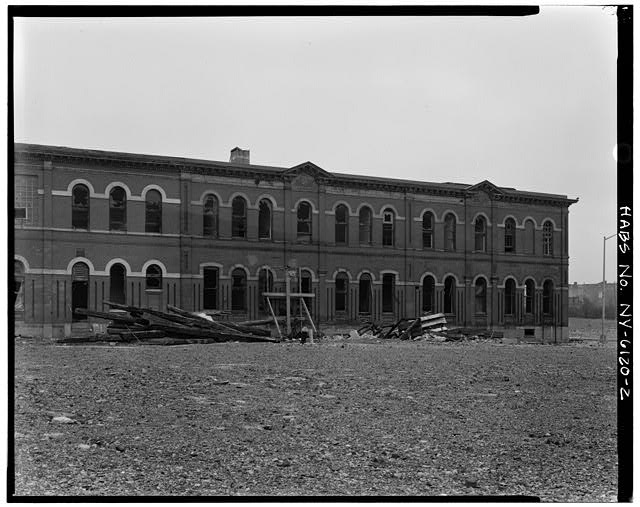
Liebmann & Sons (Rheingold Brewery)
view south
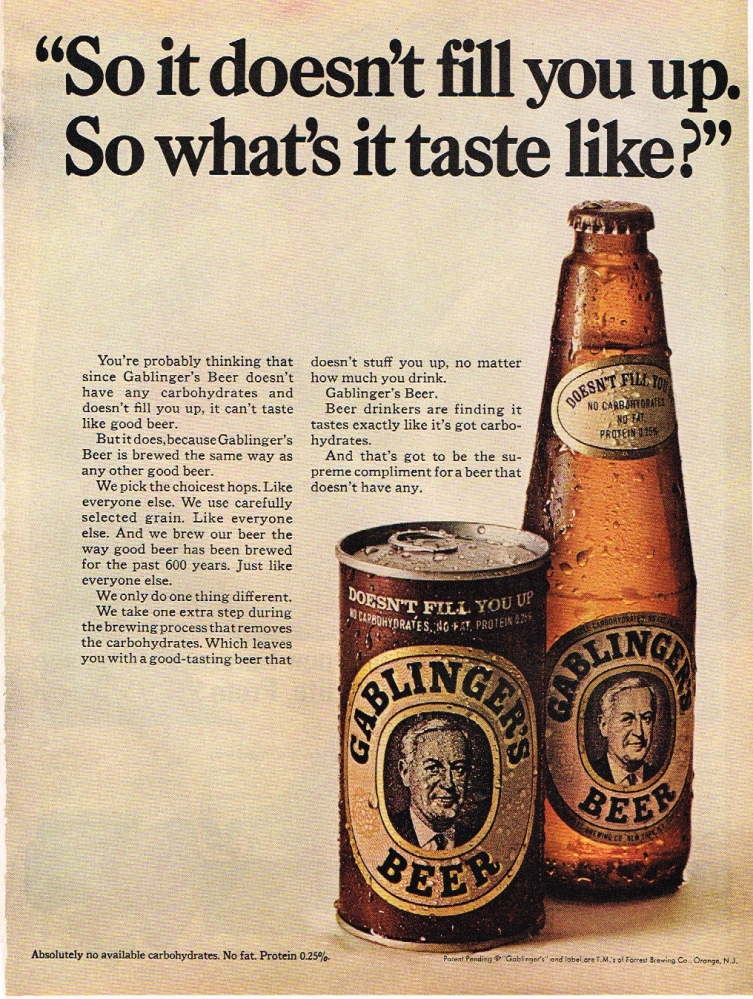
Gablingers Beer Paper Ad
Gablinger’s Diet Beer (begun at Liebmann and Sons) appeared in 1967, thanks to the work of Joseph Owades, who found a way to remove starch, carbs, and thus calories from beer. He shared the recipe with a friend at Meister Brau, which followed thereafter. Miller bought Meister Brau in 1972 and launched Miller Lite in 1975, supported with "Tastes Great, Less Filling," the iconic campaign created by McCann-Erickson.
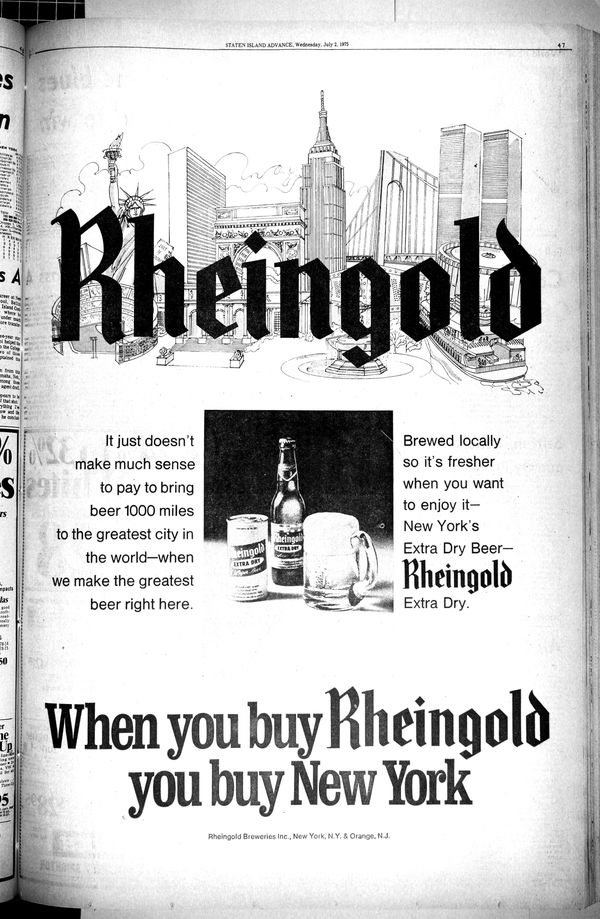
Rheingold New York ad, 1975
A Rheingold ad from The Staten Island Advance, July 2, 1975. Notice how just a year before they closed, Rheingold was trying to defend itself as a local beer against midwest brands encroaching into the New York market.
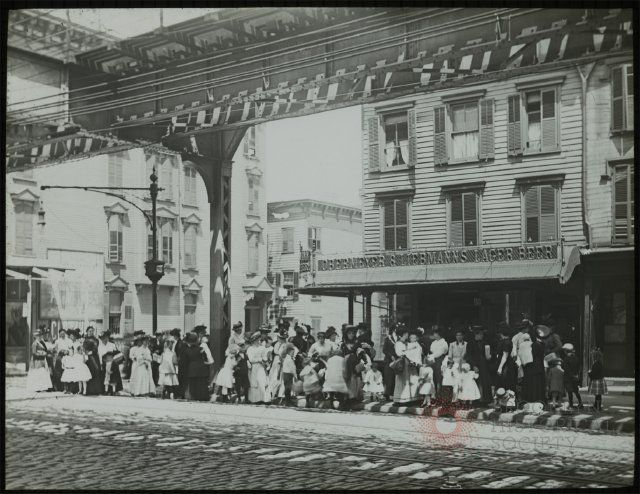
Waiting for the Trolley, 1911
Women and children waiting for the Gates Ave. trolley car on Myrtle Avenue. In the background, you can see an Obermeyer and Liebermann’s Lager Beer company location. The brewery was begun by one of Samuel’s sons, Joseph, and a business partner. It was also known as Havana Brewery and existed from 1868–1924 before being absorbed back into his father’s brewery. Source: Brooklyn Historical Society
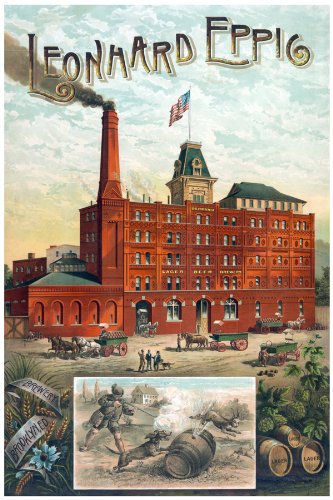
Leonard Eppig Calendar
592 Bushwick Avenue and Melrose Street
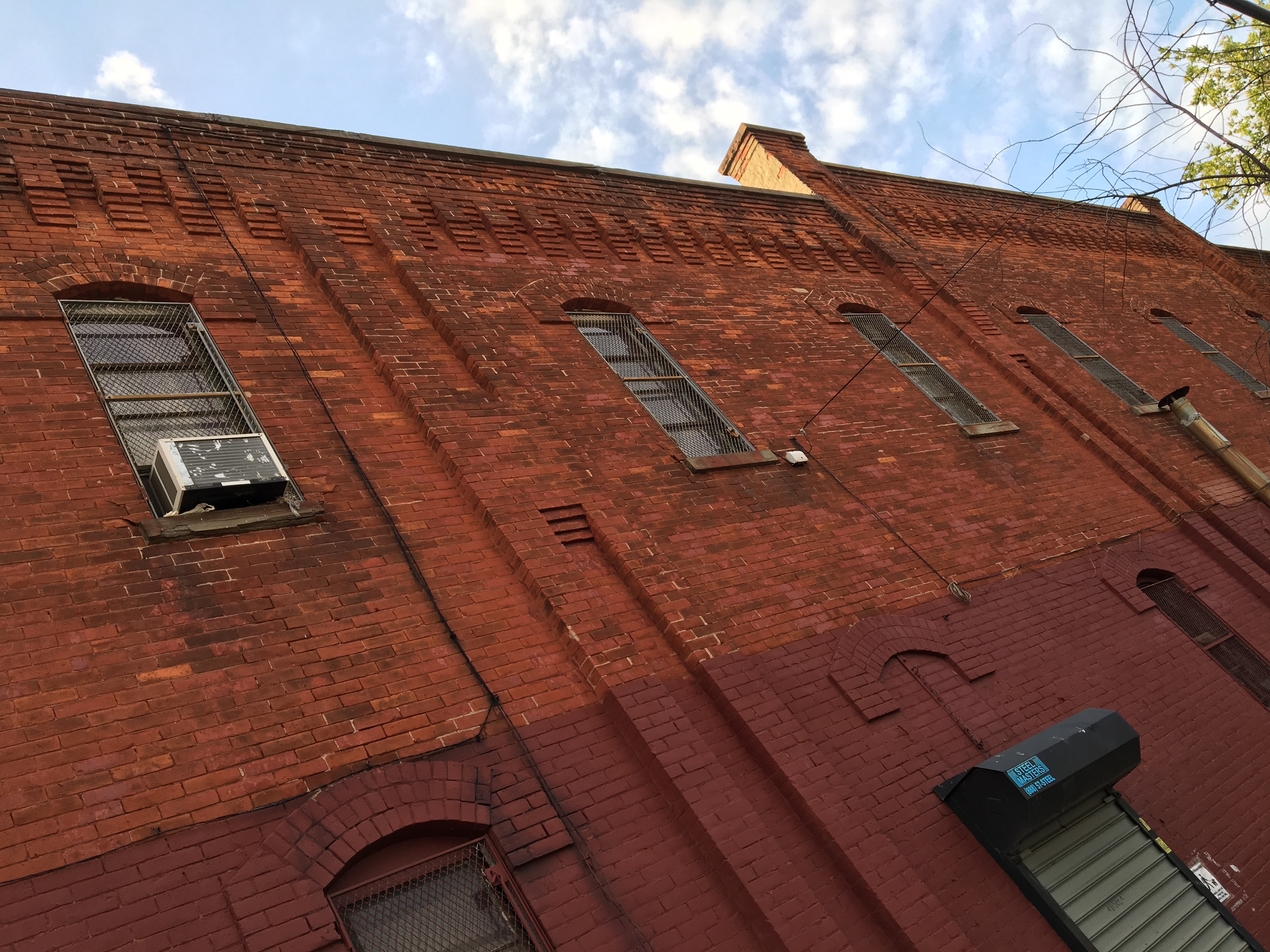
Leonard Eppig Brewery
Expansion still standing at 44 George Street
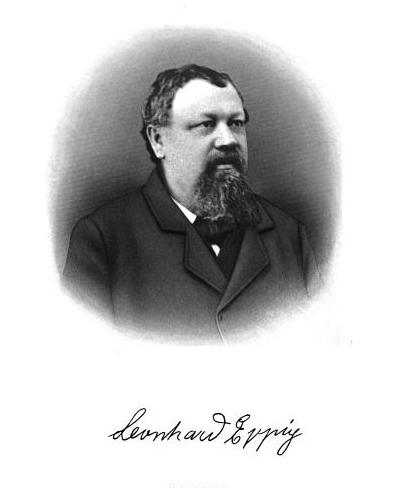
The man himself, Leonard Eppig, a towering figure of great prominence in Bushwick.
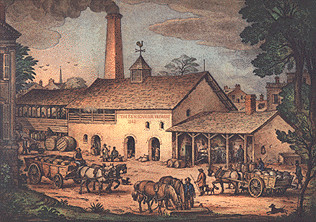
Schaefer Brewery, 1842
The brewery’s first location in Manhattan.

Schaefer Brewery, circa 1920
Schaefer Brewing Company located at 430 Kent Avenue Source: Brooklyn Public Library, Brooklyn Collection
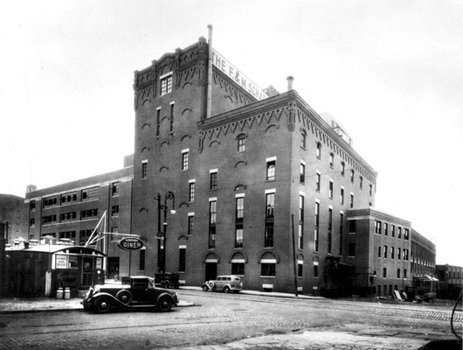
Schaefer Brewery, circa 1930
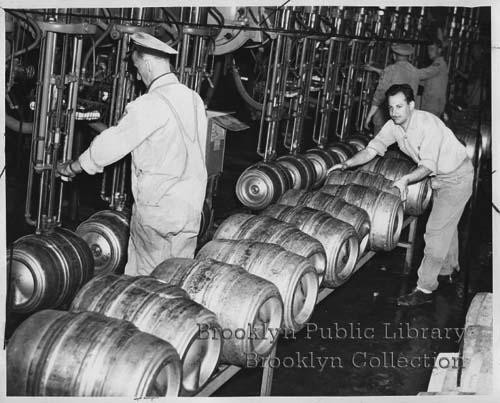
The Drought Ends, 1949
Beer rolls off an assembly line at the Schaefer Brewery as deliveries resume to local taverns and restaurants after a three-month strike Source: The Brooklyn Eagle via the Brooklyn Public Library, Brooklyn Collection
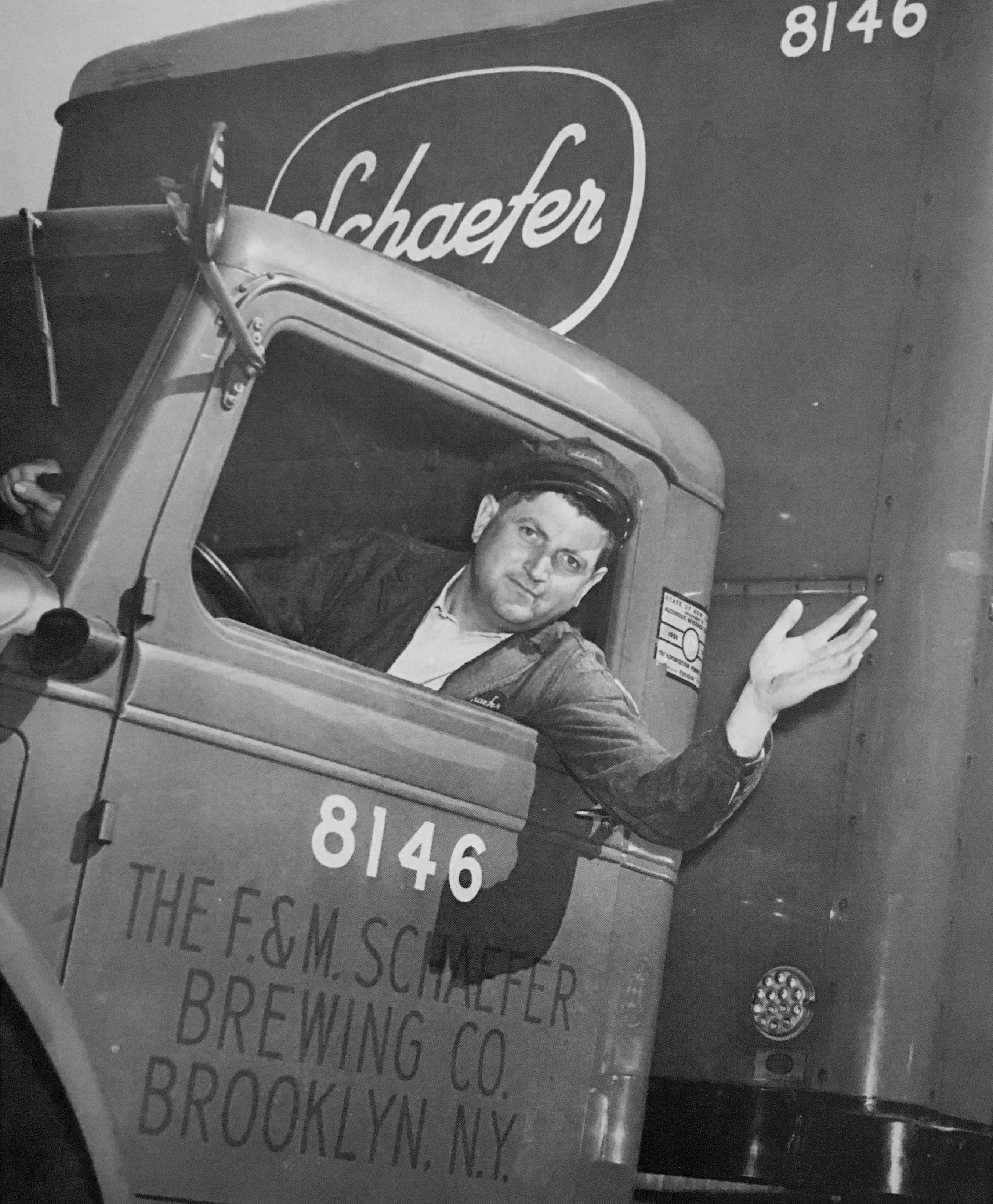
A driver going back to work, 1949
Source: Brooklyn Public Library, Brooklyn Collection
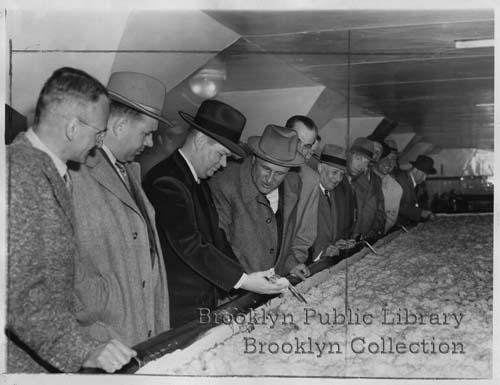
Beer Tasting, 1954
Dr. John F. Brockelmann, third from left, technical director of F. & M. Schaefer Brewing Company, shows Dr. Rudolf Luedtke, president of the German Brewers Association, samples of beer fermenting in Schaefer’s huge open tanks as other heads of West German breweries observe the test with great interest. Source: The Brooklyn Eagle via the Brooklyn Public Library, Brooklyn Collection
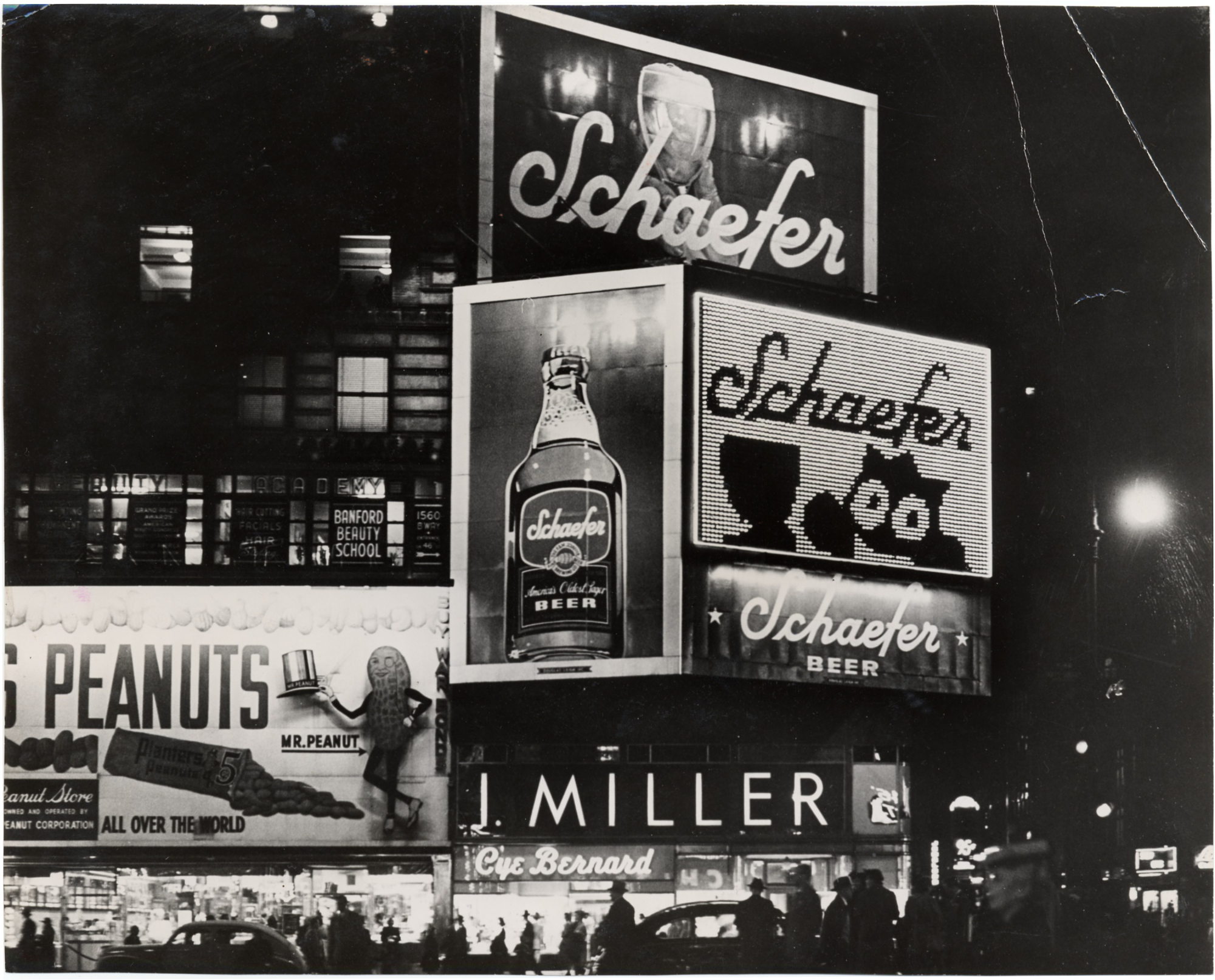
Schaefer billboards, Times Square, 1950's
Source: Archives of American Art
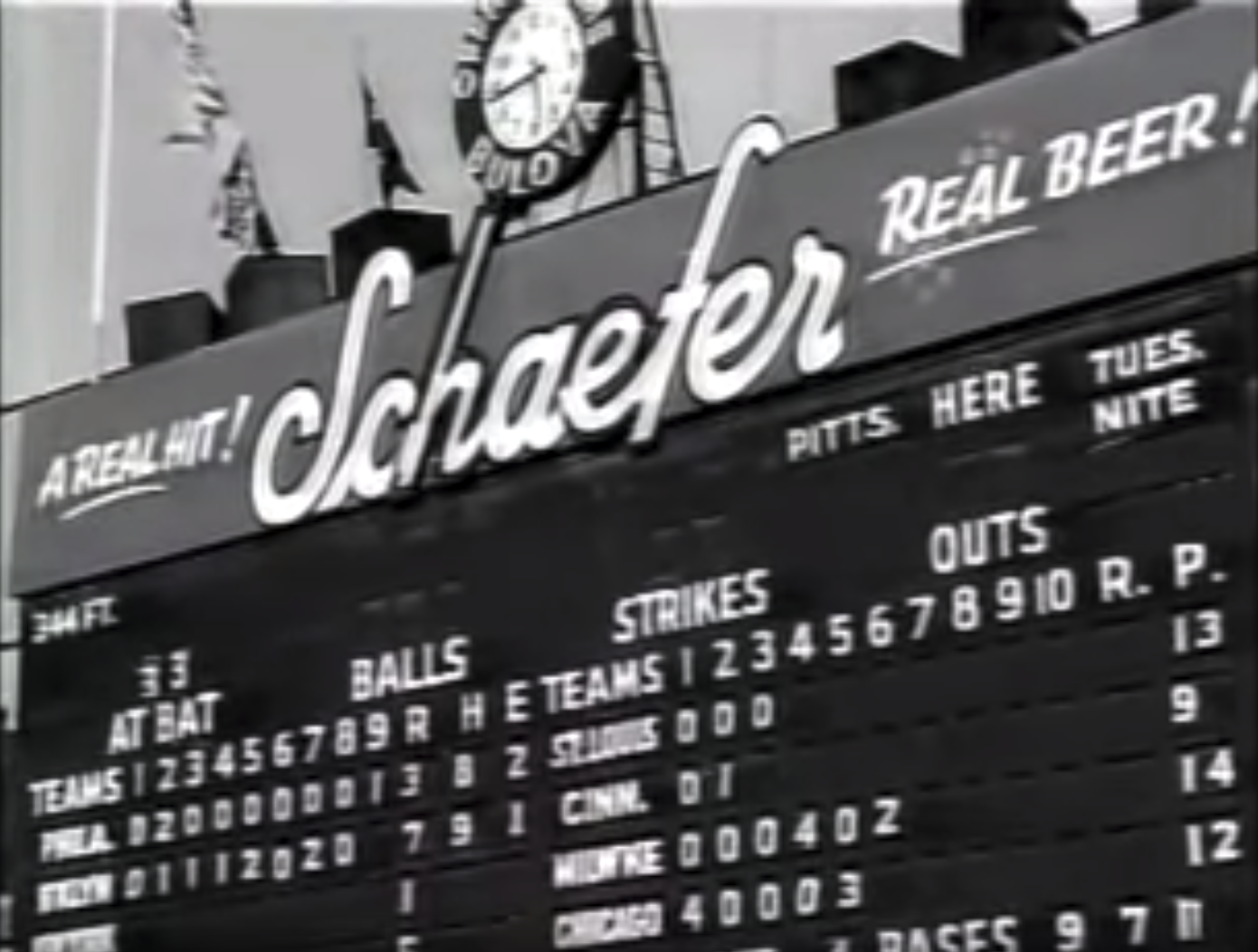
The Schaefer sign at Ebbets Field, home of the Brooklyn Dodgers. The "H" and "E" letters lit up for every hit and error, respectively.
Source: Brooklyn Dodgers: The Ghosts of Flatbush (HBO documentary)
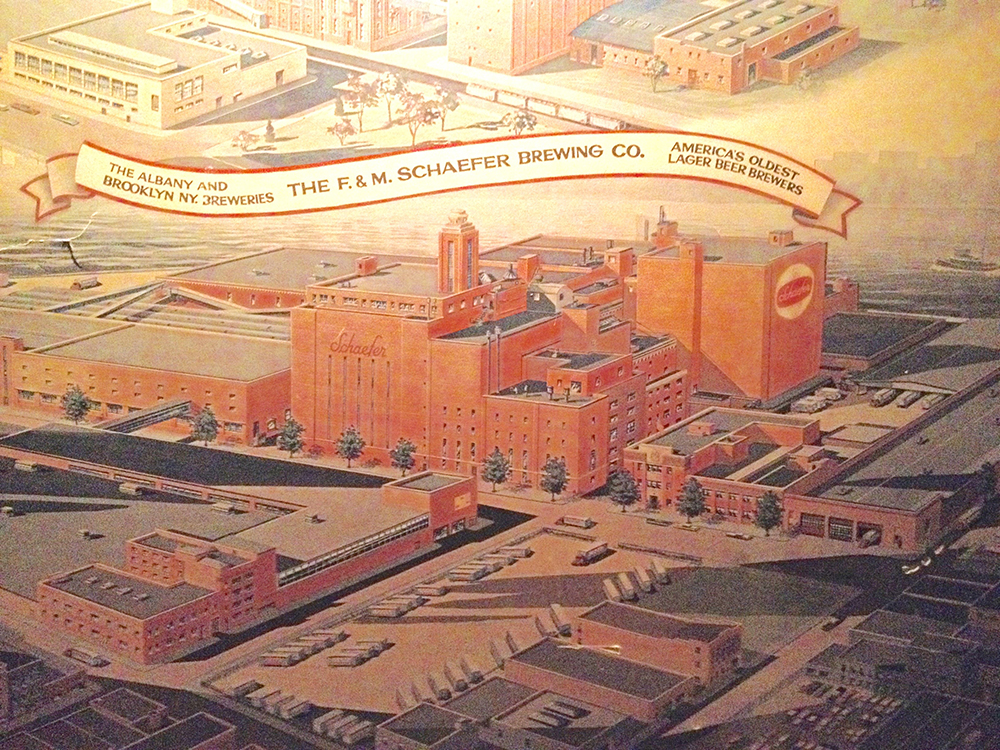
Schaefer Brewery, Kent Ave, Brooklyn
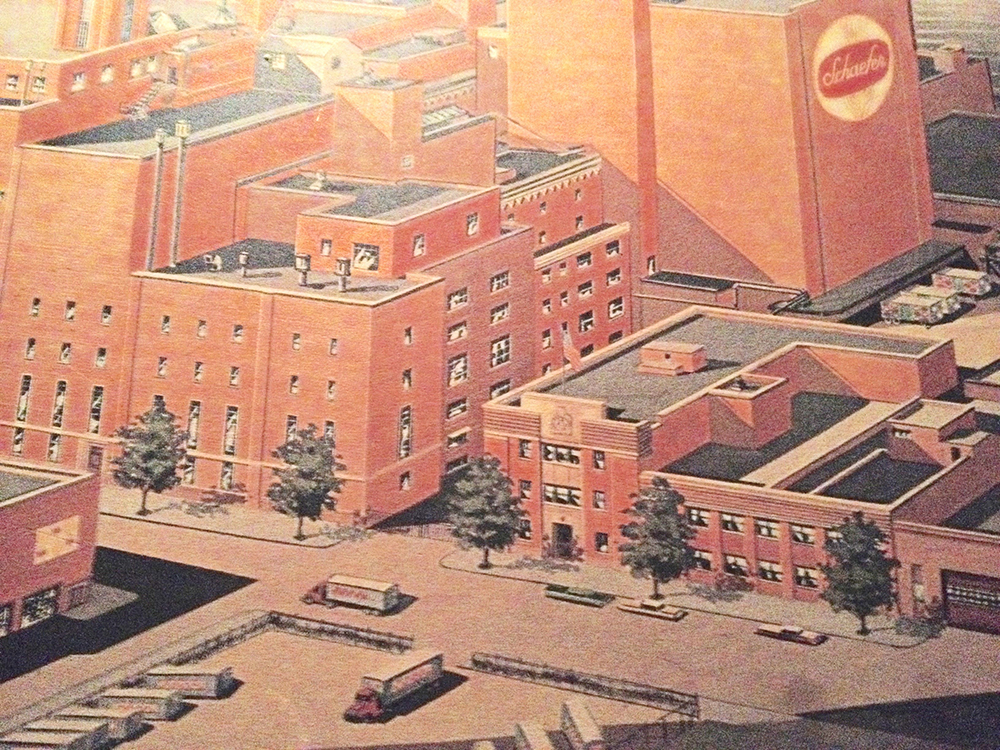
Schaefer Brewery, Kent Ave, Brooklyn (detail)
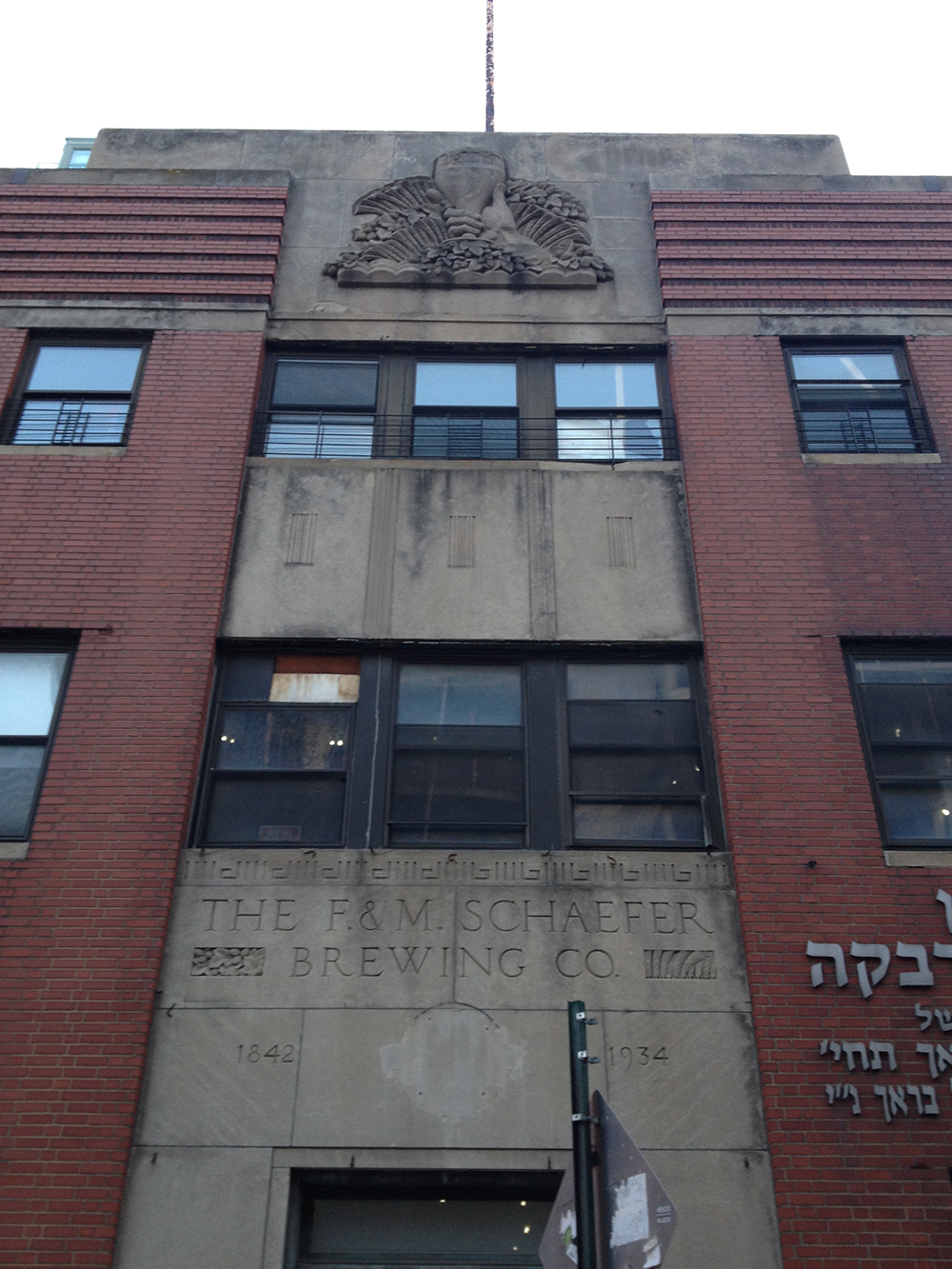
Schaefer Brewery building in 2015 (now gone)
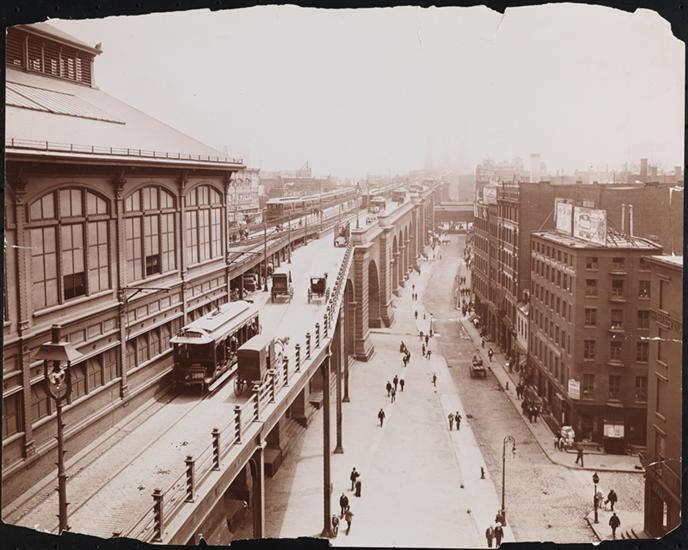
Brooklyn Bridge from Above
Near the Manhattan entrance, with street cars, horse-drawn vehicles, and pedestrians, 1898.
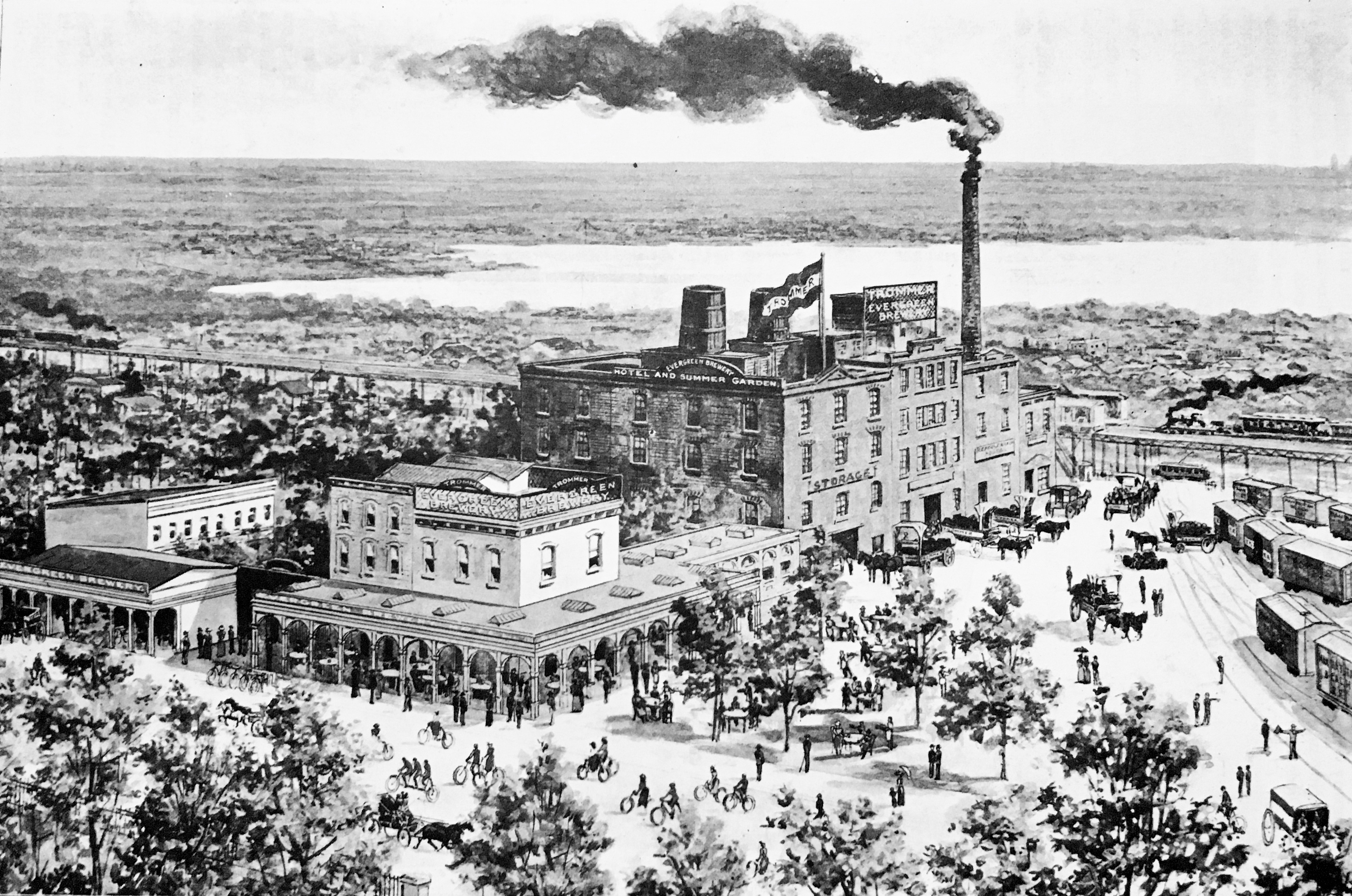
Trommer’s Evergreen Brewery & Restaurant
Bushwick Avenue and Conway Street, Brooklyn
Source: One Hundred Years of Brewing
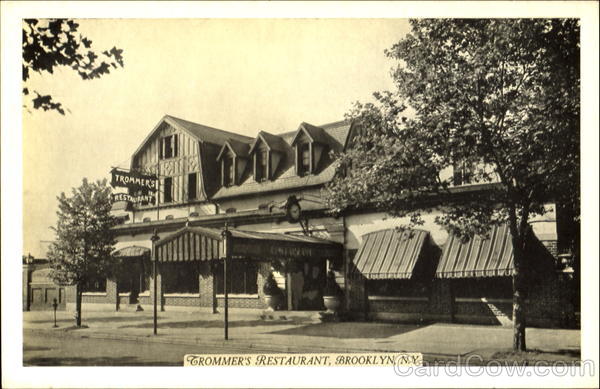
Trommer’s Evergreen Brewery & Restaurant
Bushwick Avenue and Conway Street, Brooklyn
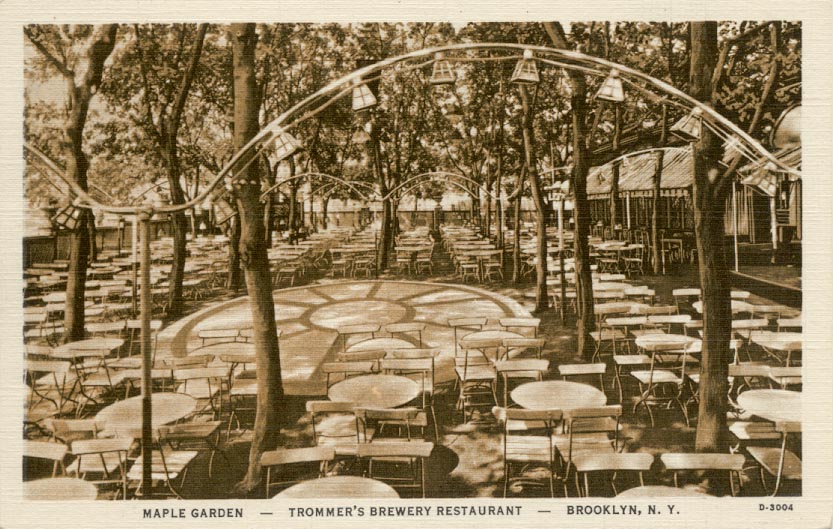
Trommer’s Maple Garden
This postcard shows one of the beer gardens that were popular in the early days: The Maple Garden at Trommer’s Evergreen Brewery and Restaurant.
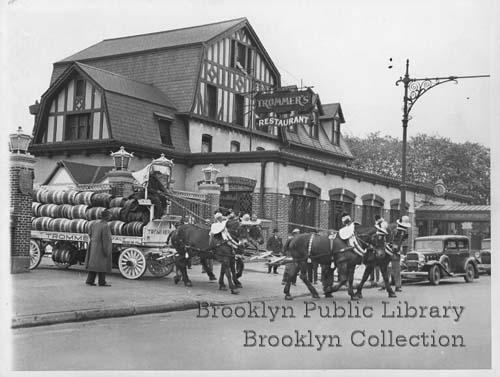
Trommer’s Evergreen Brewery & Restaurant
Bushwick Avenue and Conway Street, Brooklyn
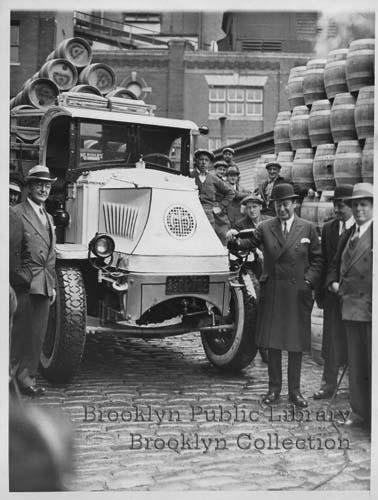
Trommer’s fleet
One of the largest fleets of trucks ever assembled for the distribution of a single product was pressed into service at the famous Trommer Brewery — Bushwick Avenue and Conway Street — for the filling of thousands of orders. Photo shows George Trommer (right), president of the brewery, smashing a bottle of beer to launch the fleet of trucks. Source: Brooklyn Public Library, Brooklyn Collection
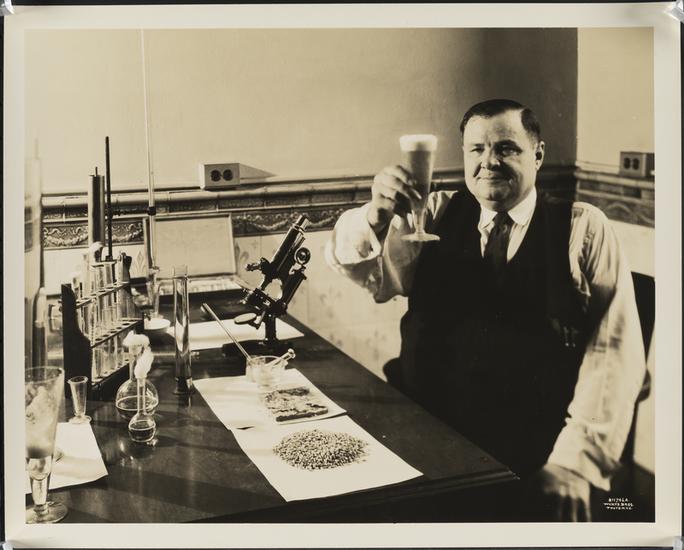
Portrait of Interboro Brewery Brewmaster Reid
Interboro was headed by Jacob Levy who bought Leonard Eppig’s Brewery just before Prohibition. Levy’s business partner was a man named Arthur Flegenheimer — more notoriously known as gangster Dutch Schultz, "The Beer Baron of the Bronx." In July of 1935, Manhattan beer giant George Ehret’s son Louis J. Ehret purchased the Interboro facility and later, the brewery was acquired by Joseph Schlitz in 1949. The brewery closed in 1950.
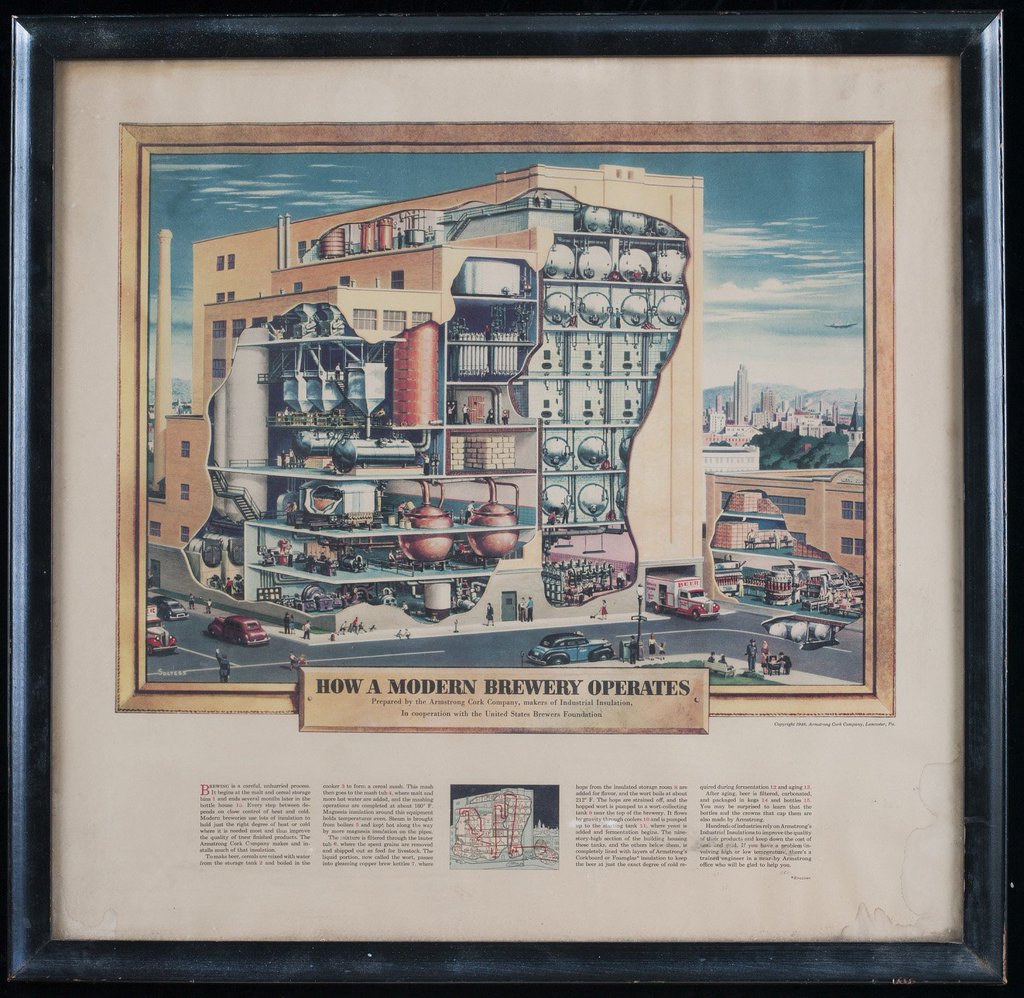
Mid-Century Brewing Plant Diagram
Much like the Schlitz plant still standing on Evergreen Ave. Source: The Smithsonian’s American History Museum
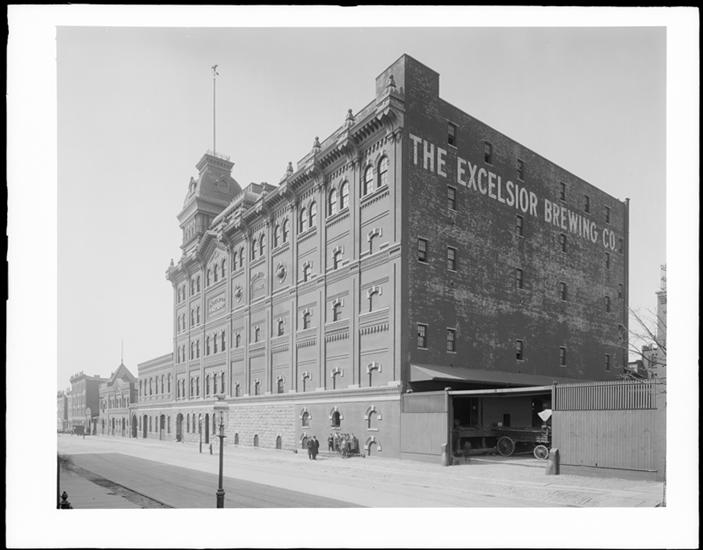
Excelsior Brewing Co. Building
Pulaski Street near Sumner Avenue
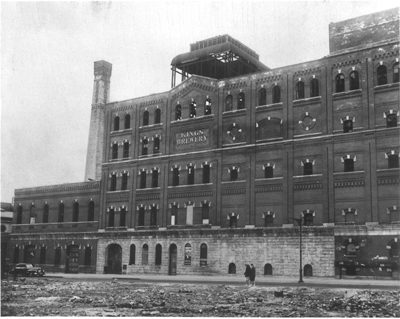
Excelsior Brewery, 1948
Photo is showing the abandoned brewery. It had closed in 1938 and would be torn down in just a few years, sometime in the 1950s.
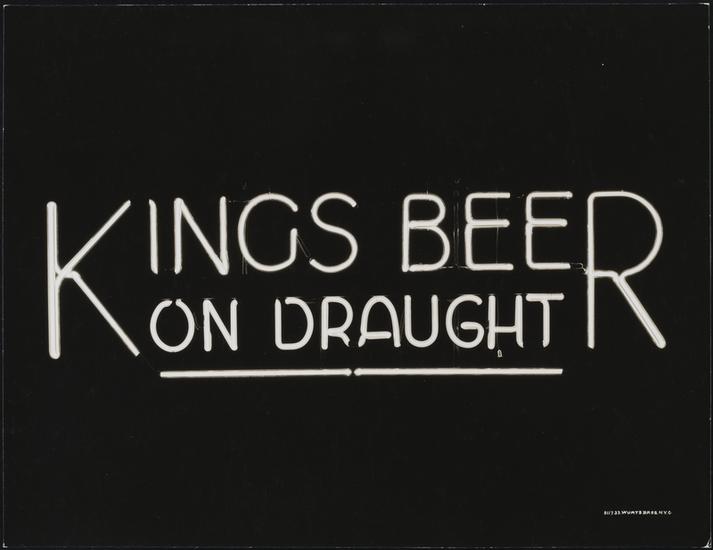
Kings Beer Neon Sign, 1933
Located at 363 Johnson Avenue, this brewery began as Frederick Hower Brewing Company before becoming Excelsior Brewing Company and finally, after Prohibition, Kings Brewery Source: Museum of the City of New York
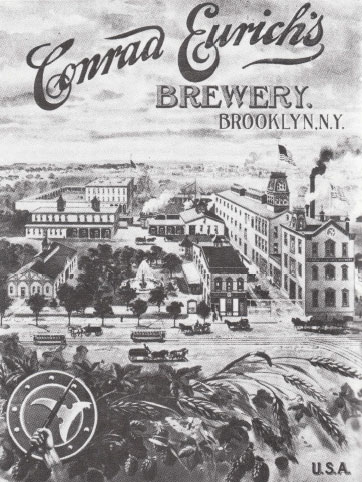
Eurich Brewery Calendar, 1900
Wyckoff Avenue at Halsey Street. This brewery passed through several changes of ownership and as many names: Leibinger & Oehm (1887-1895), Conrad Eurich (1899-1903) and finally, the Elm Brewing Company, which went out of business in 1907. All the proprietors used the hand-and-axe symbol. The Brooklyn border (Bushwick/Ridgewood) is just behind the buildings.
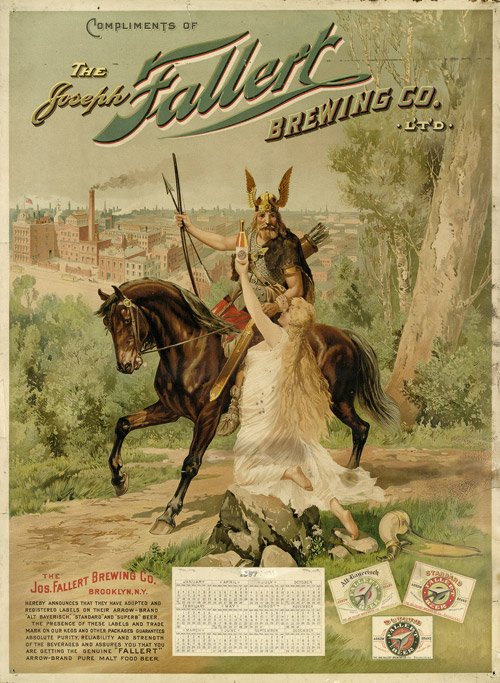
Joseph Fallert’s Brewery Calendar, 1896
Meserole Street and Lorimer Street
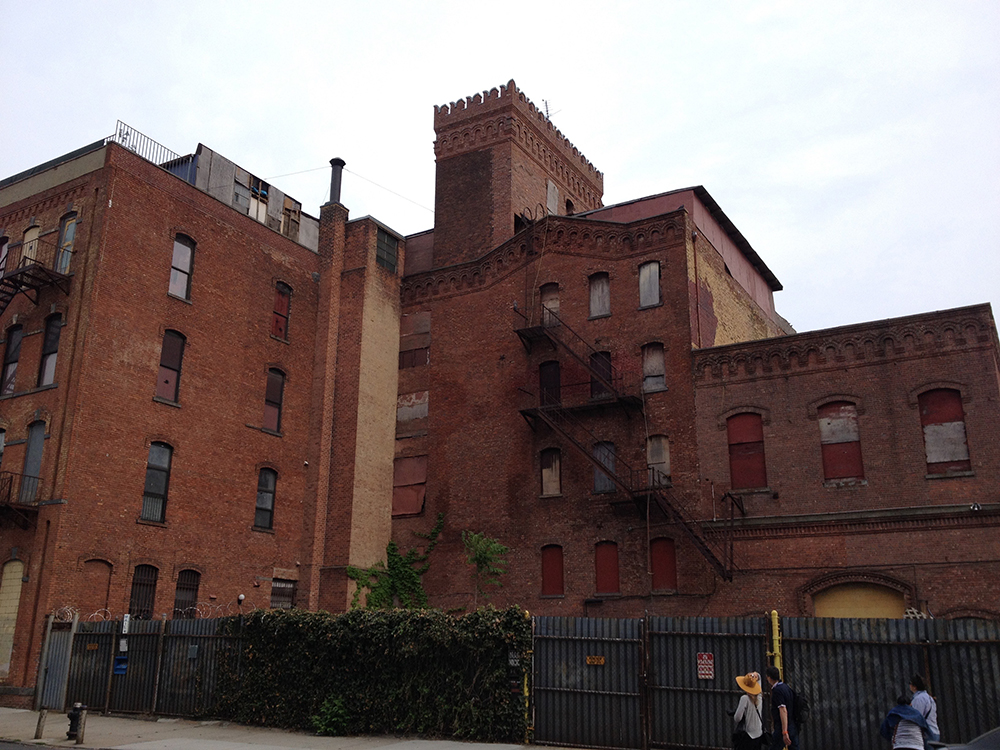
Joseph Fallert’s
Meserole Street and Lorimer Street
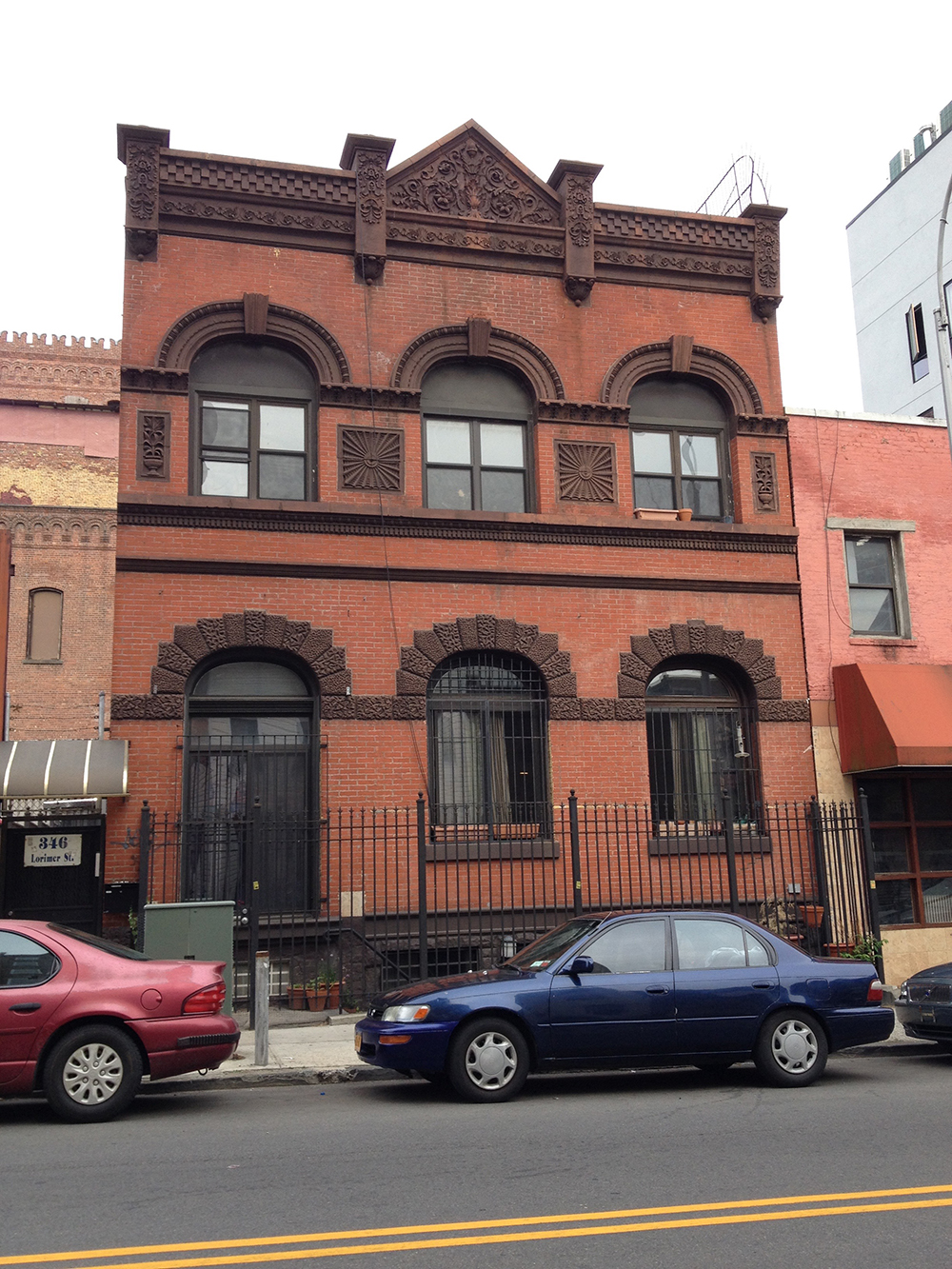
Joseph Fallert’s
Meserole Street and Lorimer Street
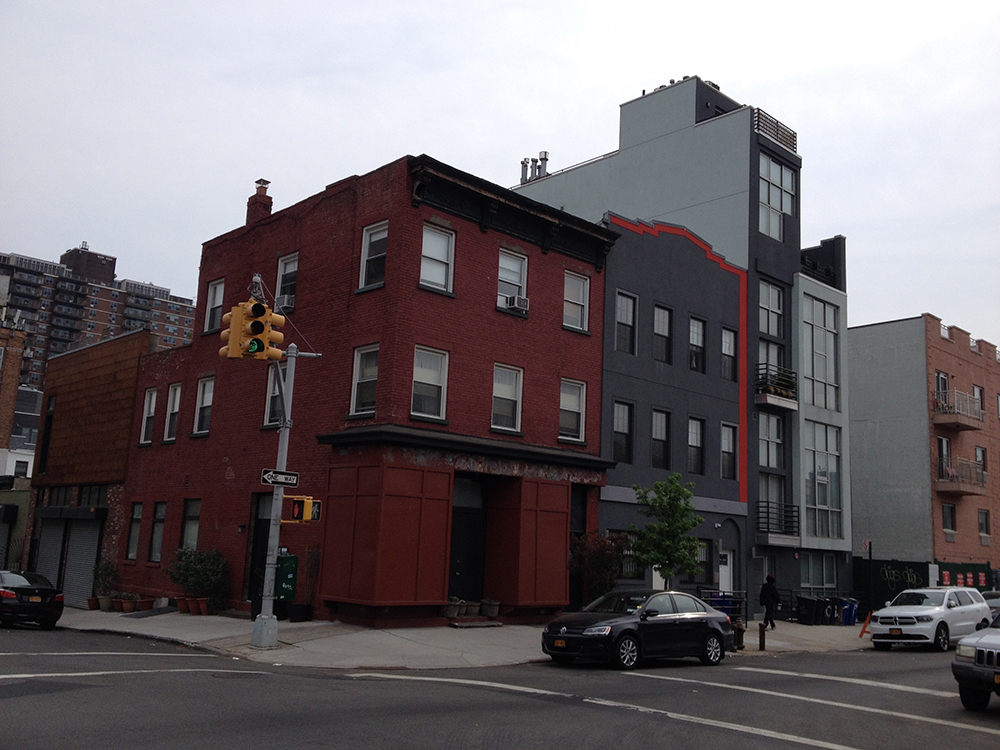
Joseph Fallert’s
Meserole Street and Lorimer Street
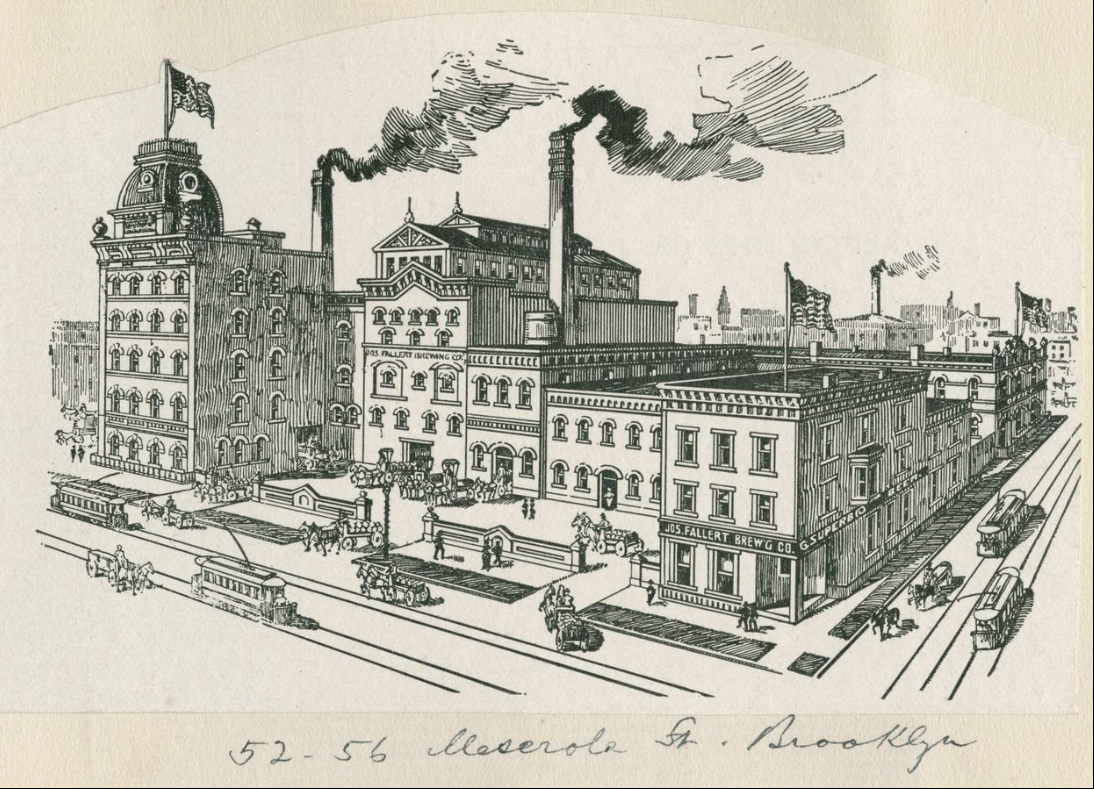
Joseph Fallert’s
Meserole Street and Lorimer Street
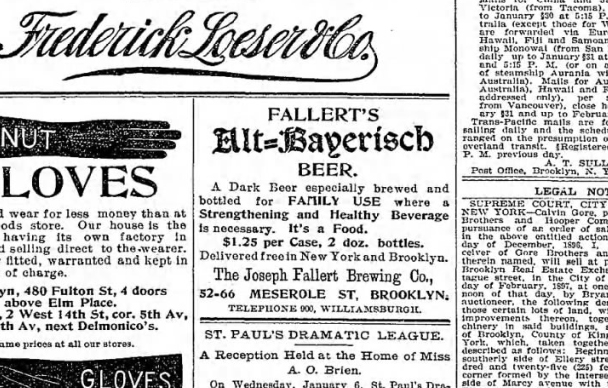
Joseph Fallert’s Daily Eagle Ad, 1897
"Alt-Bayerisch (old Bavarian) beer. A dark beer especially brewed and bottled for family use where a strengthening and healthy beverage is necessary. It’s a food."
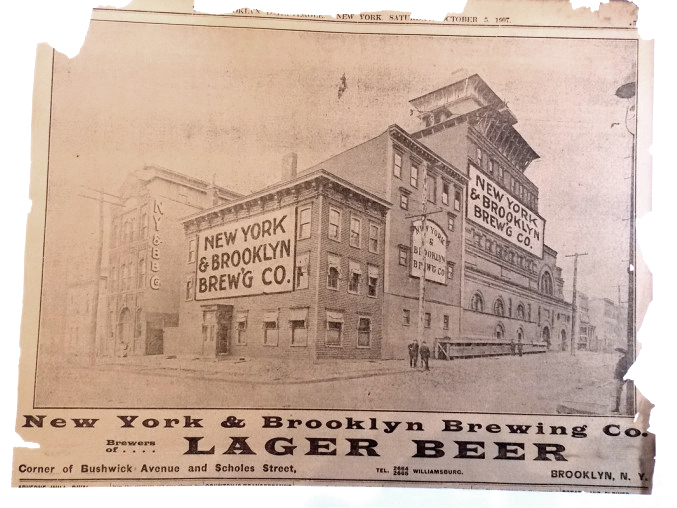
New York & Brooklyn Brewing Company Ad, 1907
Located on Brewer's Row
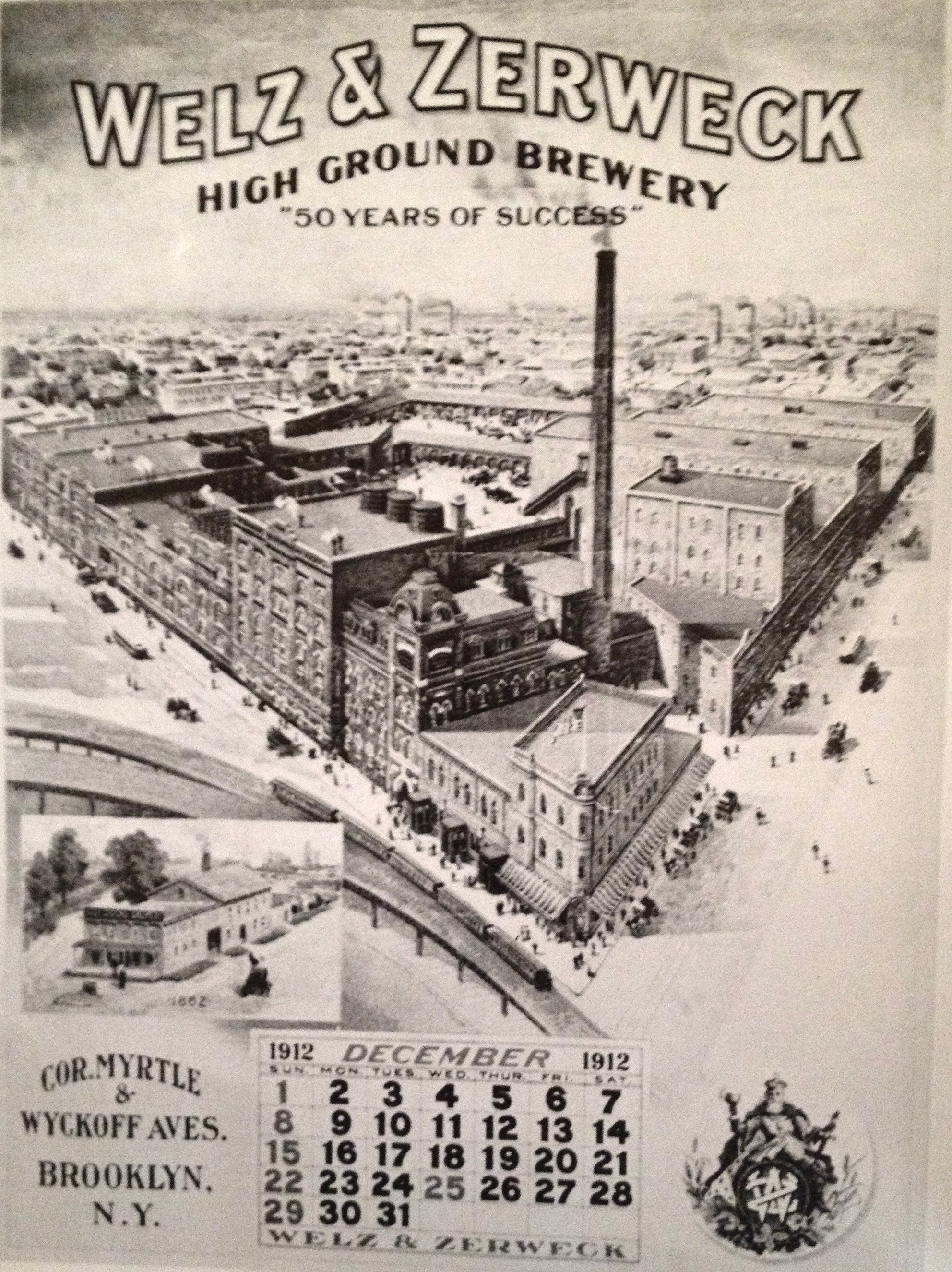
Welz & Zerweck High Ground Brewery
At Myrtle and Wyckoff. This calendar depicts the brewery in 1912 along with a thumbnail on the lower left of the original brewery in 1862.
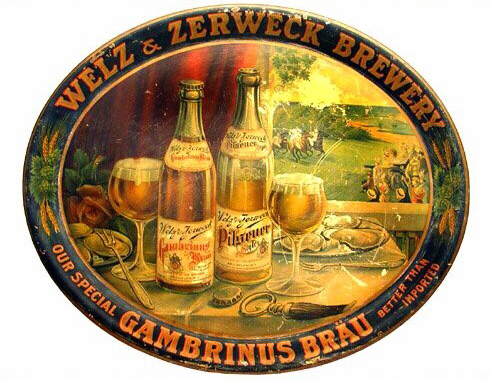
Welz & Zerweck Tray
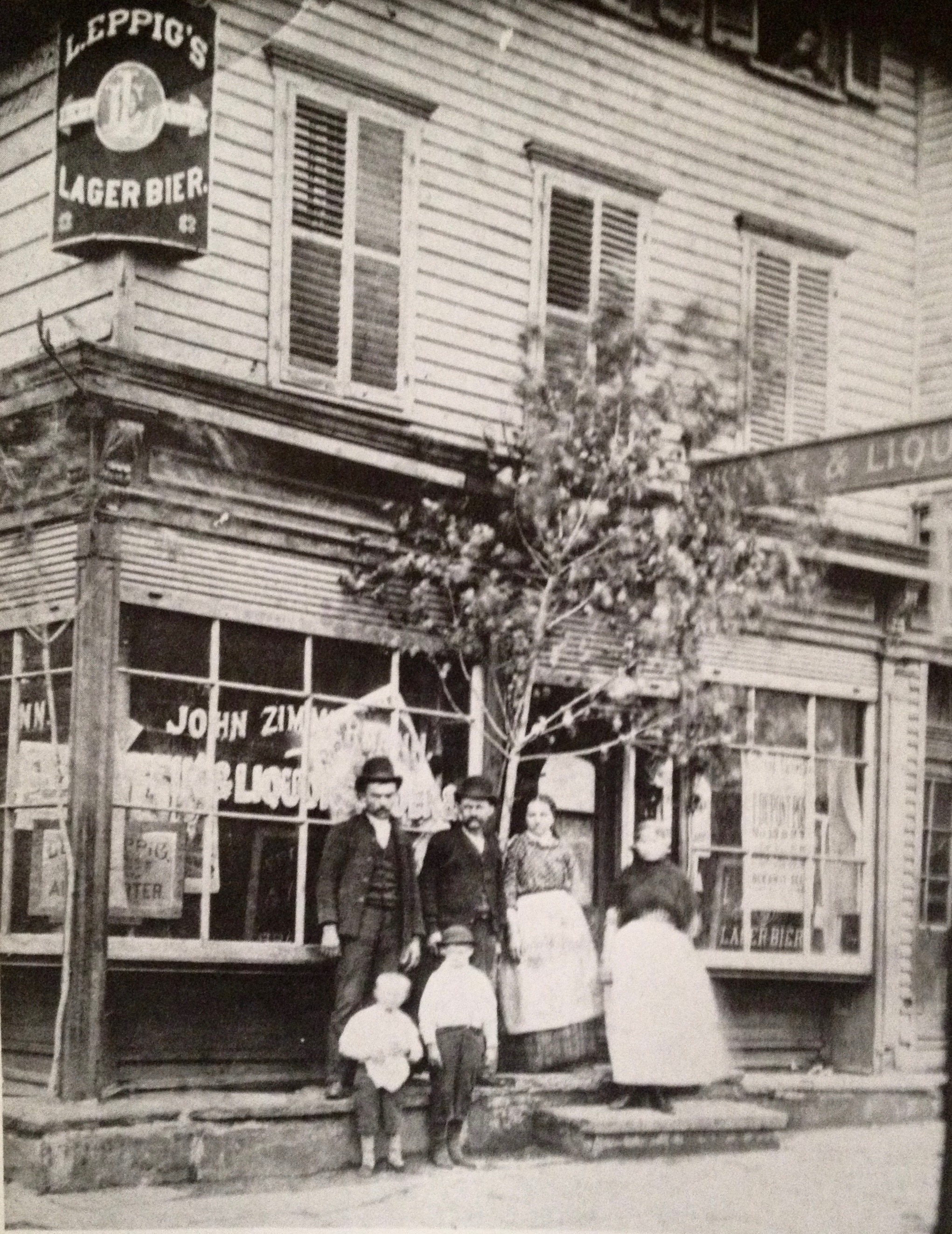
Zimmerman’s Saloon, 1877
This saloon, located at the corner of Graham Ave and Moore St., was owned by John Zimmerman in the early 1880s and sold to Anna Marie and Henry L. Schwint circa 1885. That’s Anna Marie in the doorway and her husband Henry standing above her to her immediate right. Source: John A. Schwint via Will Anderson’s Breweries of Brooklyn
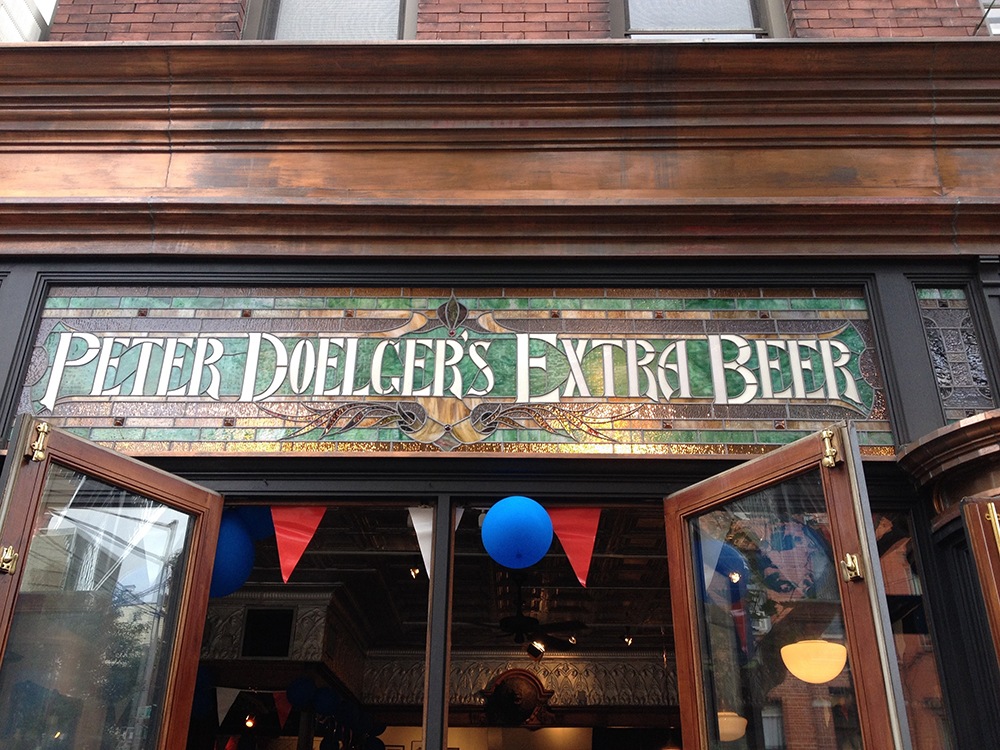
Teddy’s
Berry Street and N 8th Street
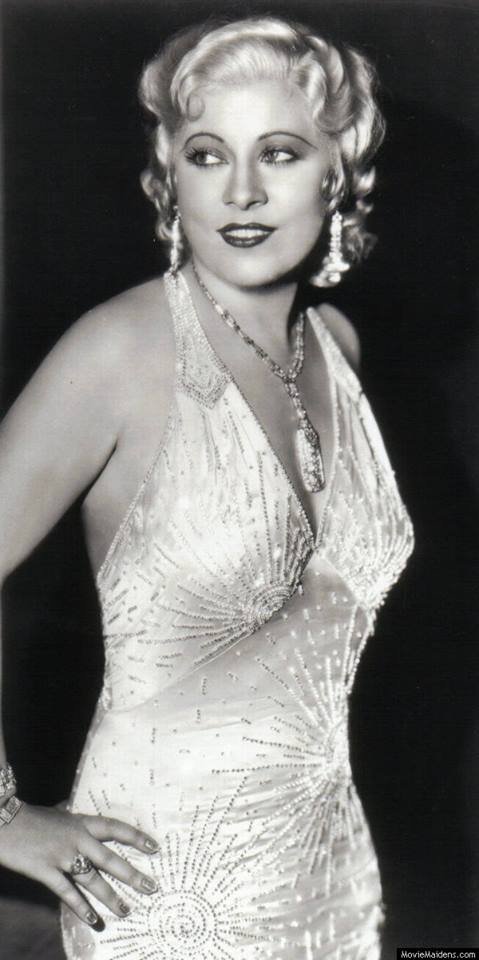
Mae West
Granddaughter of Bushwick beer baron, Peter Doelger
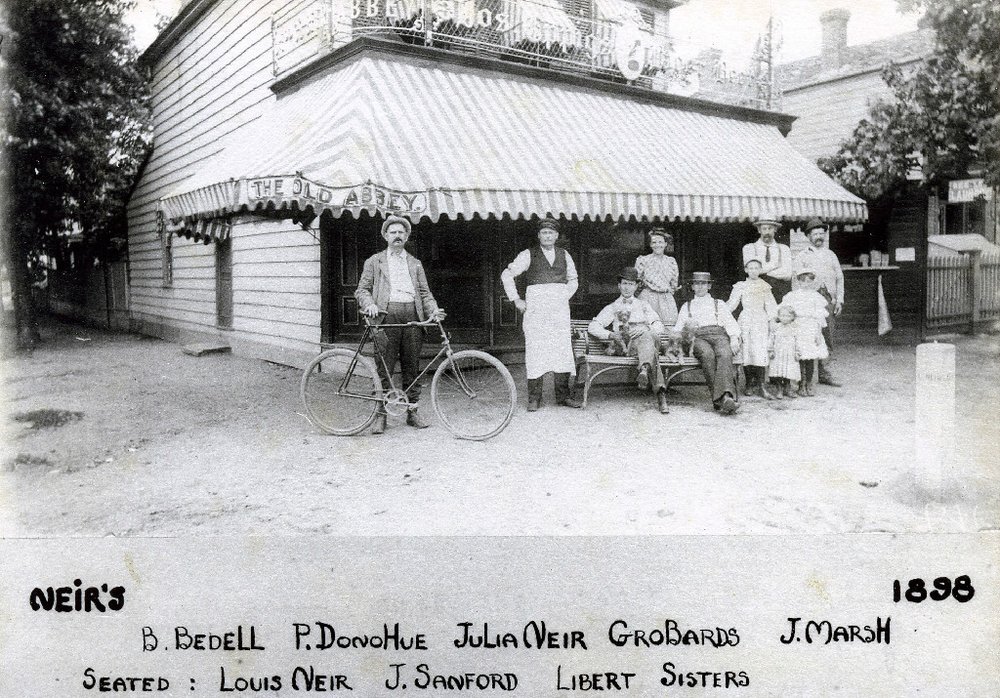
Neir’s Social Hall, 1898
One of the oldest bars in New York. And where Martin Scorsese shot all the great bar scenes in Good Fellas!

A Dance at Neir’s Social Hall
The old ballroom at Neir’s where Mae West once performed. Judging by the 48-star flag, this photo must have been taken sometime after 1912.
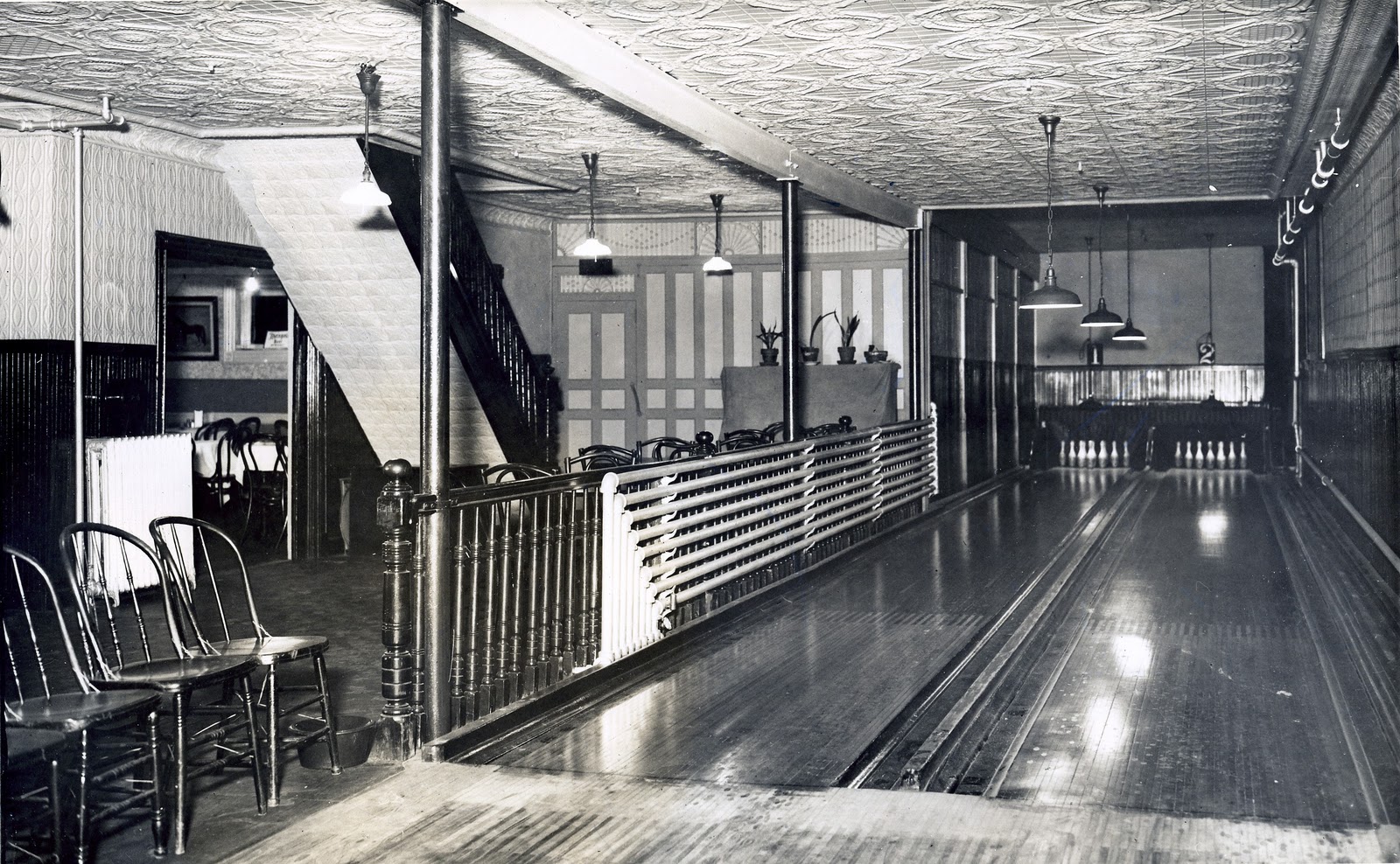
The Bowling Alley at Neir’s
One of the first registered bowling alleys in the country.
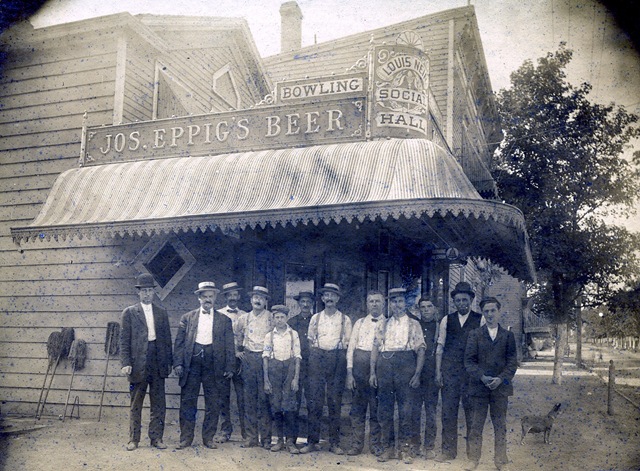
Neir’s Social Hall
Note the sign proclaiming proud service of Joseph Eppig’s Beer (Joseph was Leonard’s younger brother).
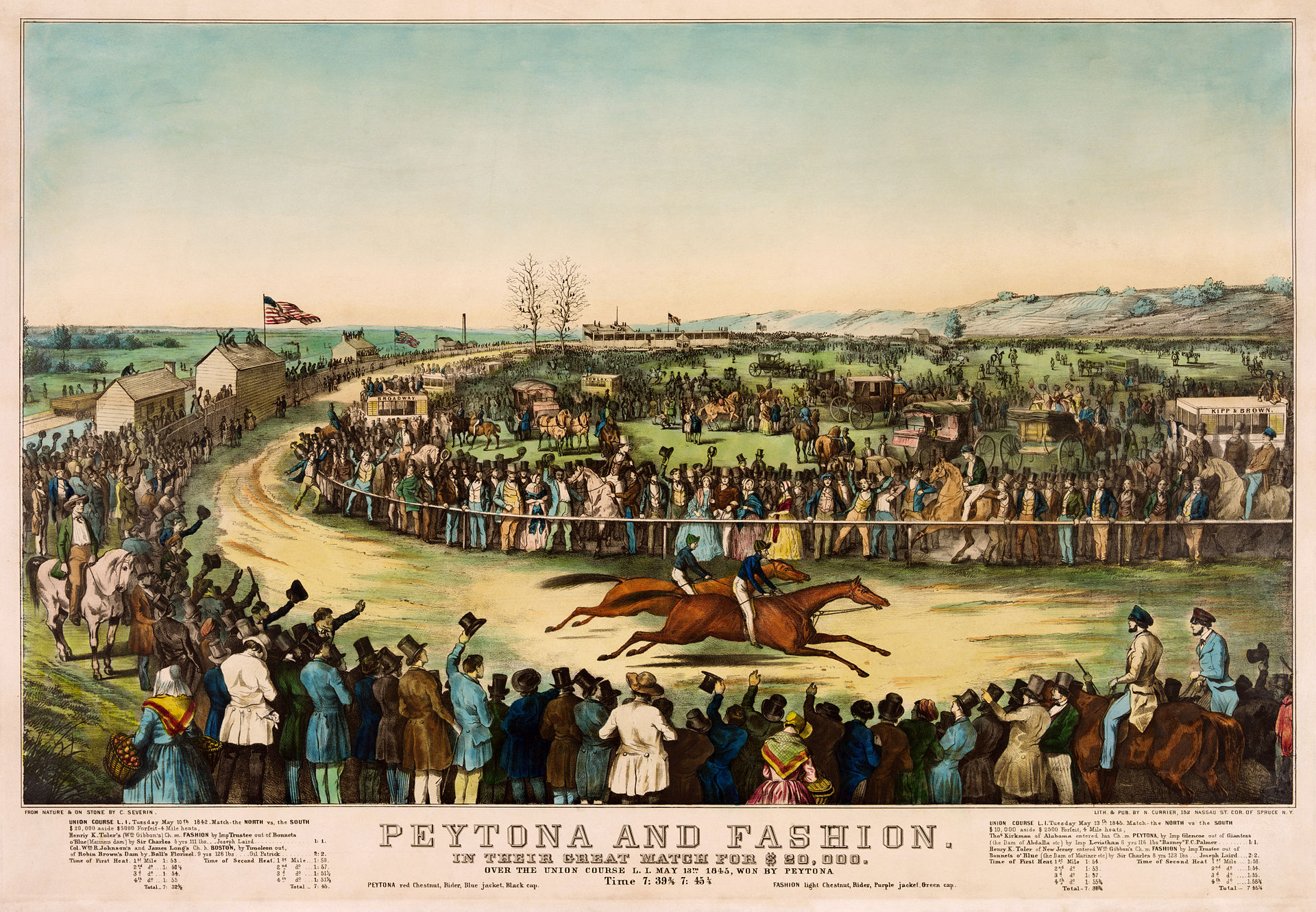
Fashion meets Peytona, 1845
A famous race at Union Course, situated directly by Neir’s Social Hall. The race took place on May 13th, 1845 with a purse of $20,000. The lithograph is by Charles Severin and published by Nathaniel Currier. The race was won by Peytona, time 7:39 3/4 : 7:45 1/4. Source: United States Library of Congress’s Prints and Photographs division.
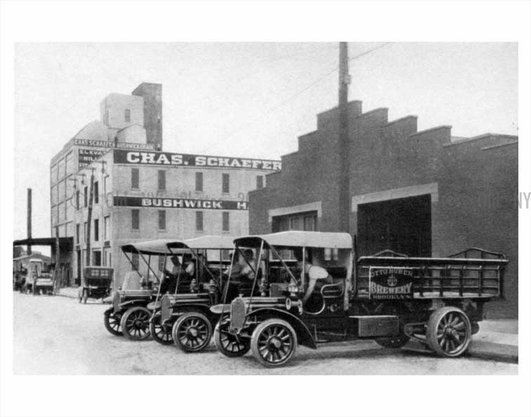
Chas. Schaefer Corp. and Otto Huber trucks
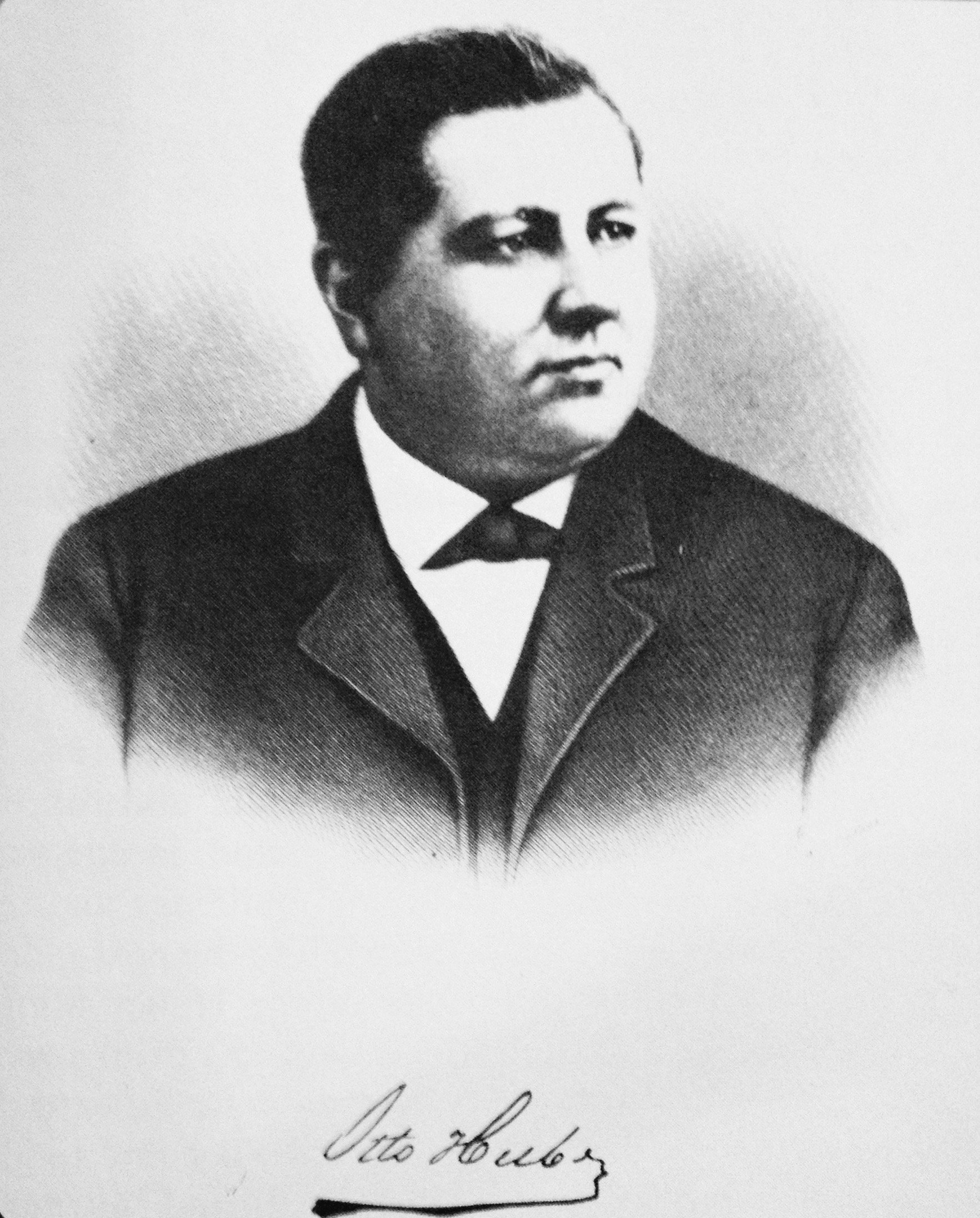
Otto Huber, Sr.
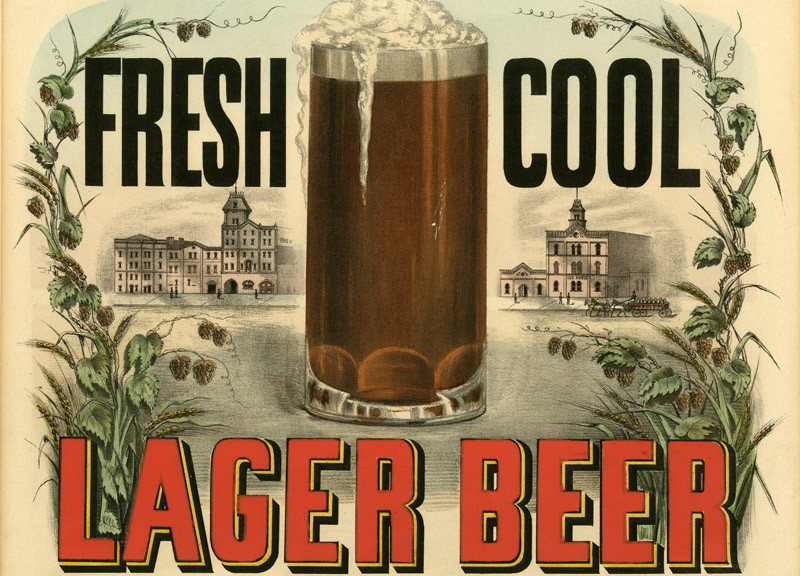
Otto Huber Brewery Ad
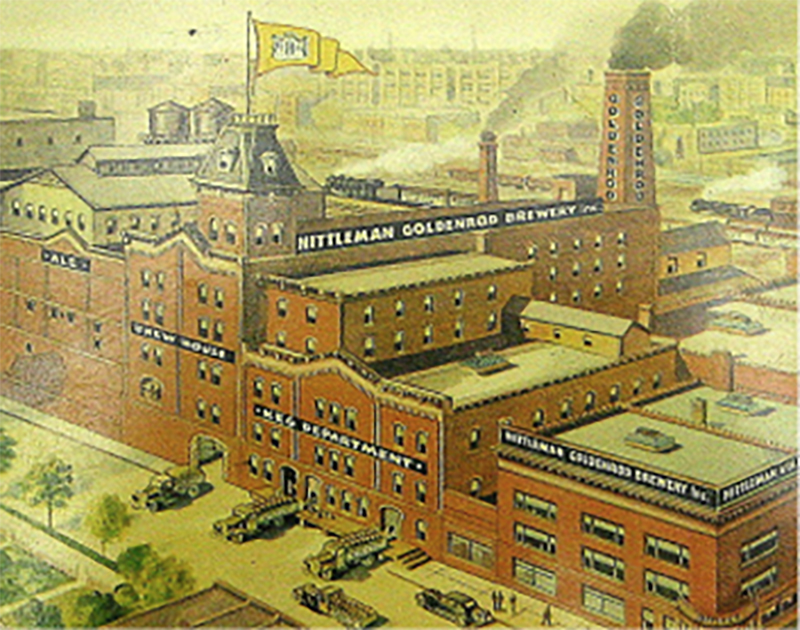
Huber-Hittleman Brewery Complex
Meserole Street from Bushwick Avenue to Waterbury Street
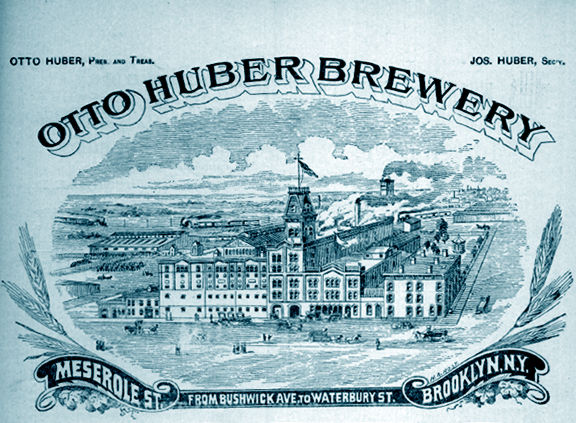
Otto Huber Brewery Ad
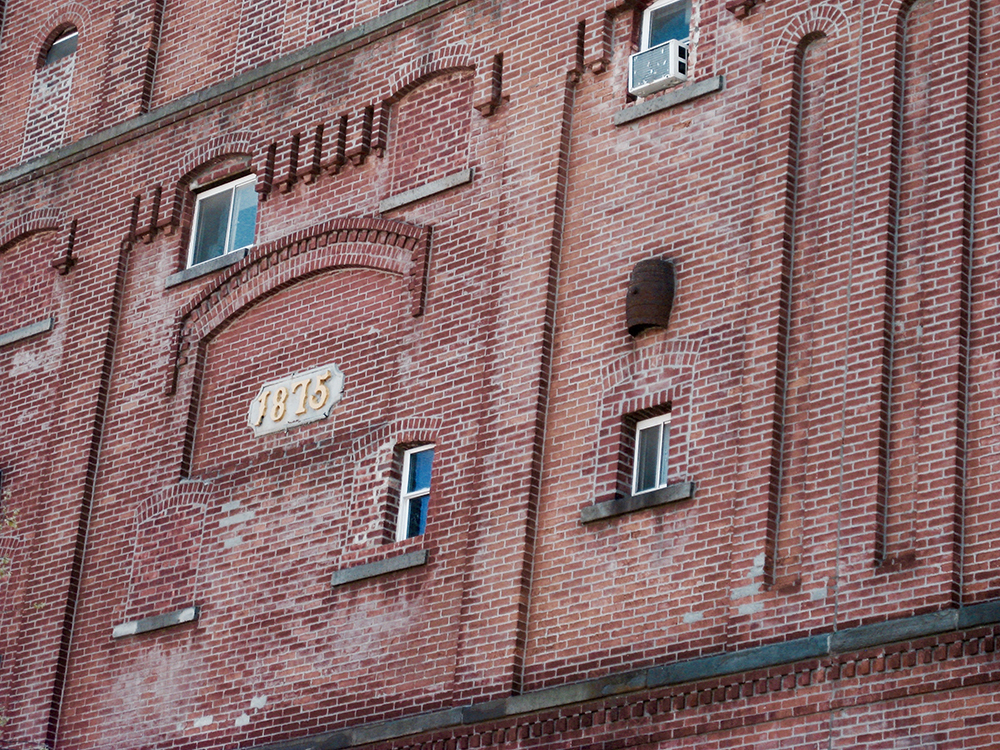
Huber-Hittleman Brewery today
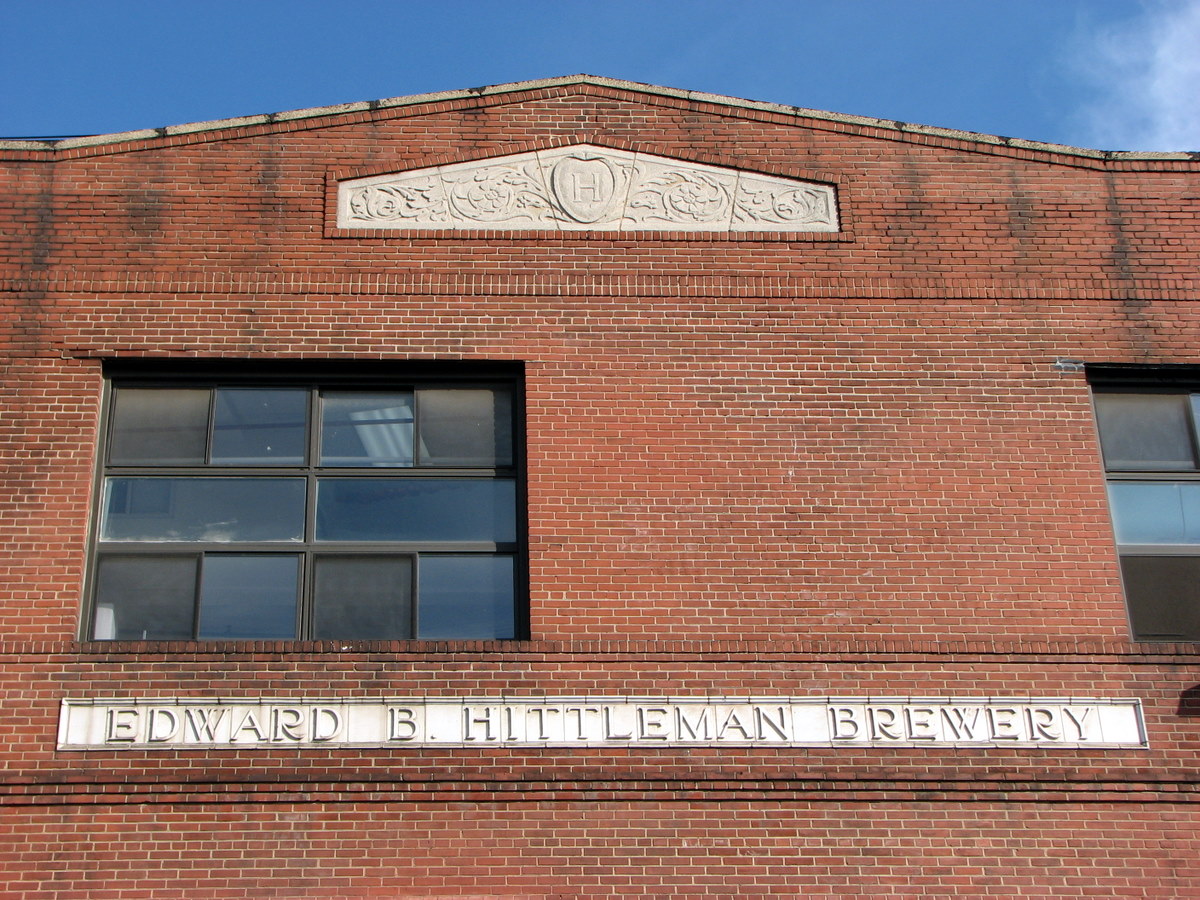
Huber-Hittleman Brewery today
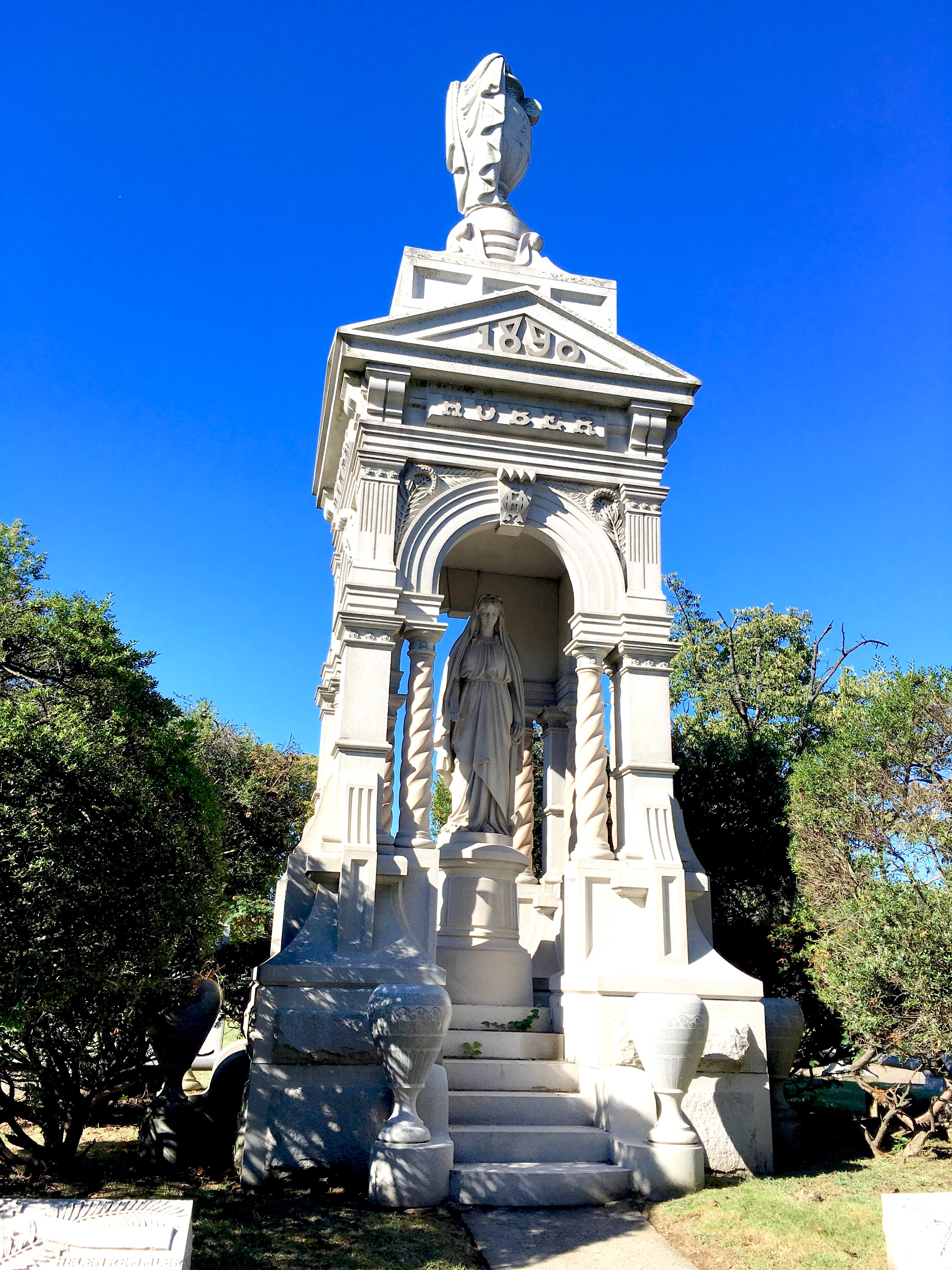
Otto Huber’s final resting place in Cypress Hills Cemetery (also where Jackie Robinson is buried)
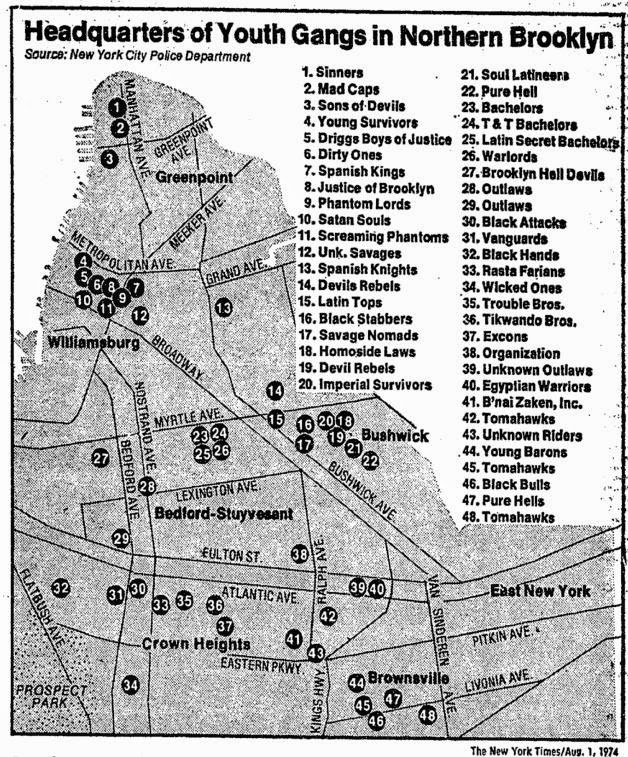
1974 Map of North Brooklyn Gangs
To give you an idea of this area around the time when Rheingold and Schaefer, the last of the Brooklyn breweries, close their doors in 1976, this is a NYPD map published in the New York Times on August 1, 1974, showing various gang heaquarters of north Brooklyn. If you've seen the movie The Warriors, you may be surprised how accurate some of those gang names actually were. My personal favorites include the Phantom Lords, Savage Nomads, Wicked Ones, Devil Rebels, and Driggs Boys of Justice.
And gang violence continued to dominate the area. Even into the 80s, when Brooklyn Brewery was using the old Huber-Hittleman Brewery as a warehouse, truck drivers refused to go there at night due to the crime.
Source: The Bowery Boys
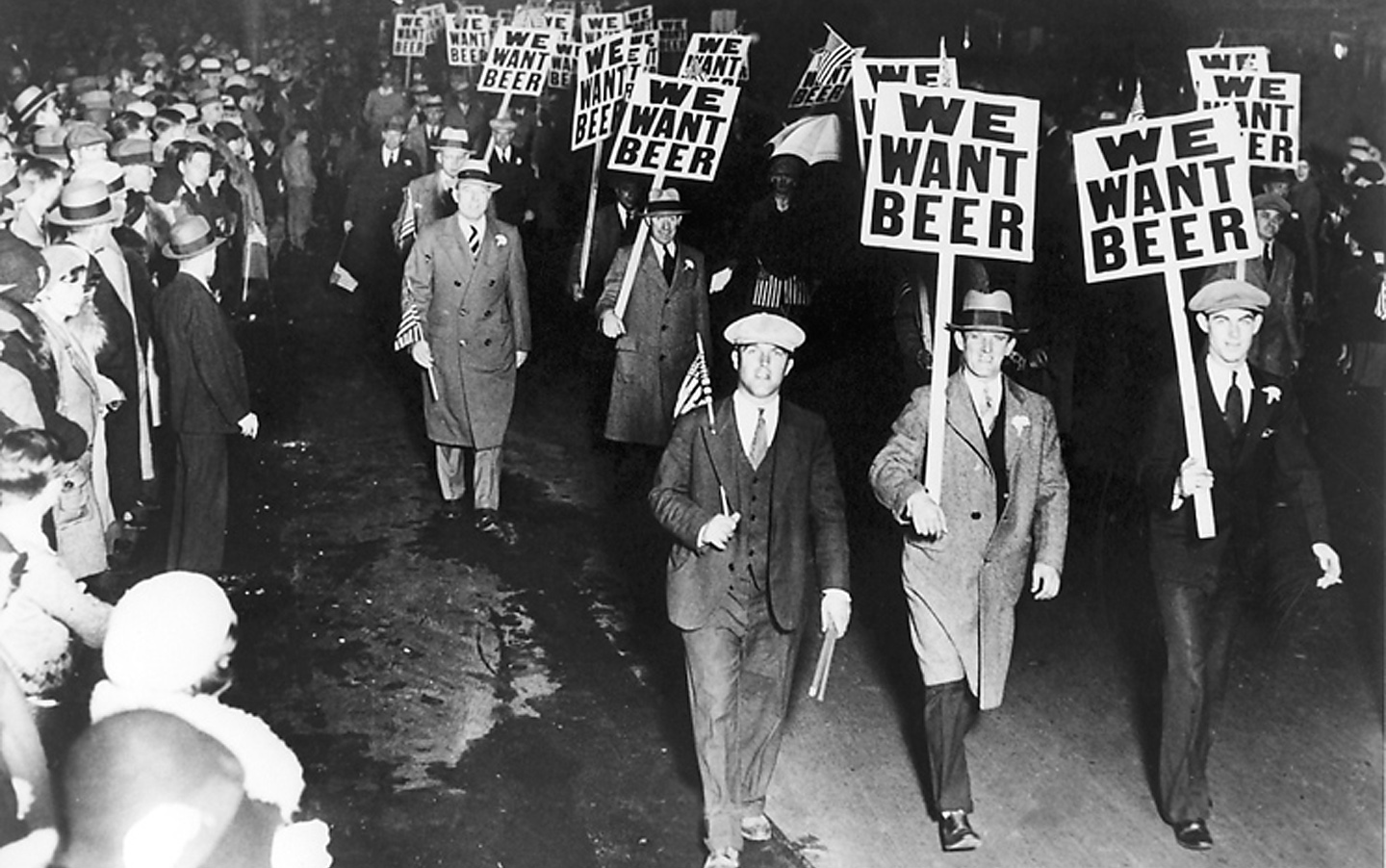
Prohibition march, 1930
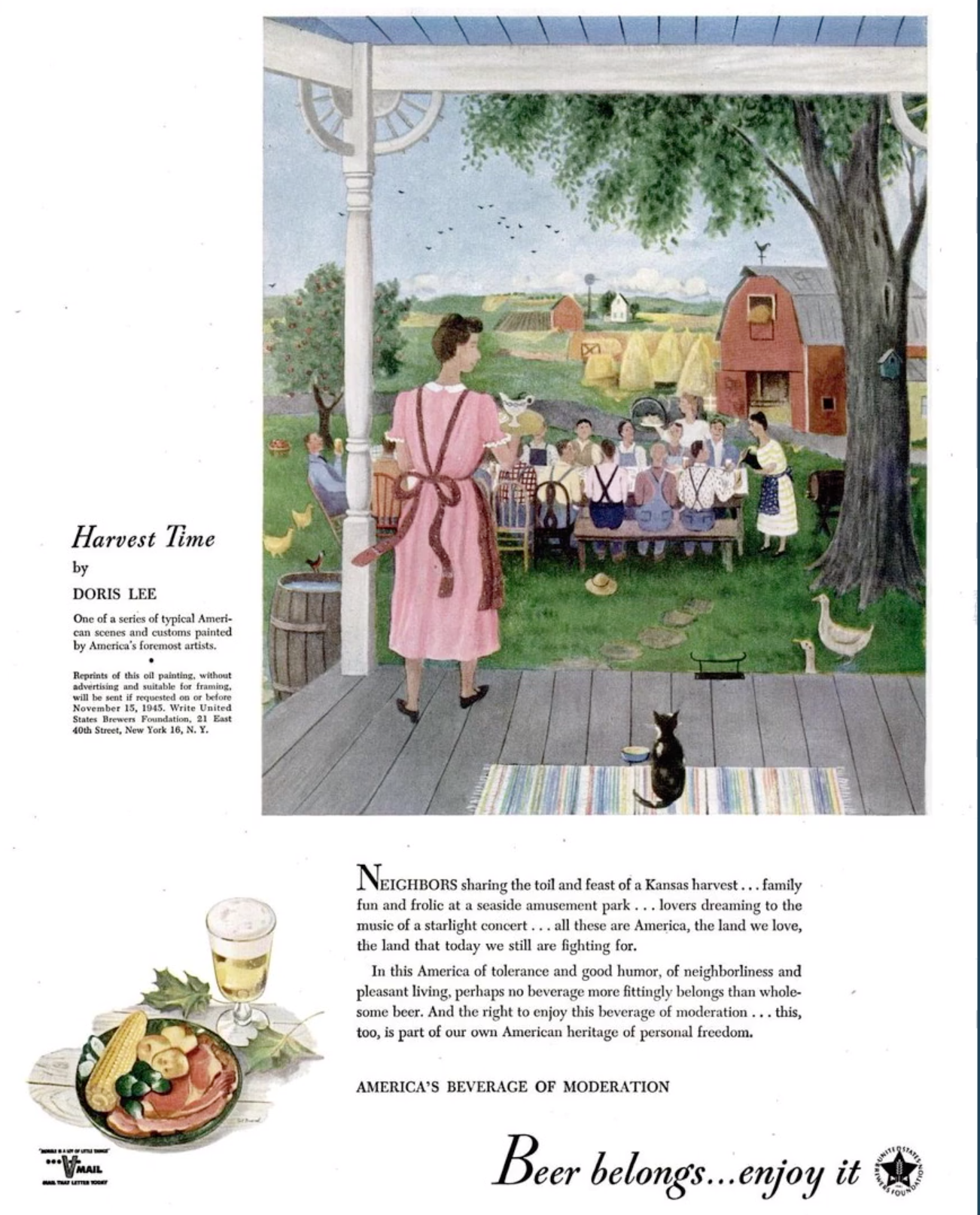
A beer ad featuring Doris Lee's 1945 Harvest Time
Now housed in the Smithsonian American Art Museum in Washington, D.C., the painting was commissioned for the ad by the United States Brewers Foundation. They wanted to depict beer as an all-American, wholesome product. They were trying to revitalize their image after Prohibition and present beer as a natural addition to the family table.
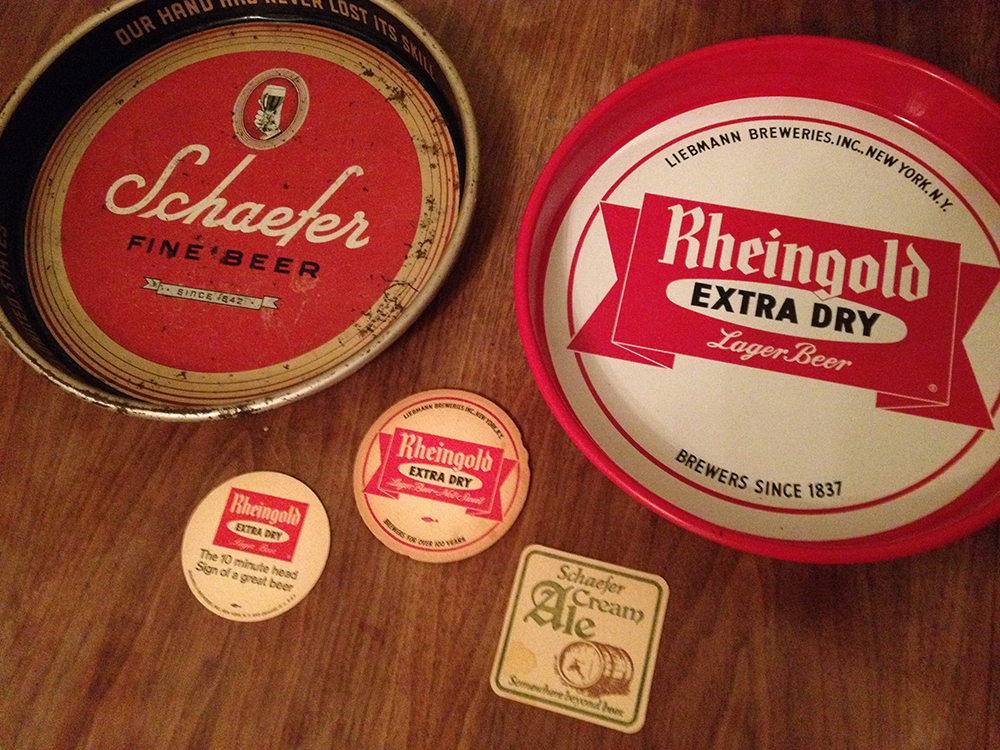
My own Schaefer and Rheingold flea market finds!